


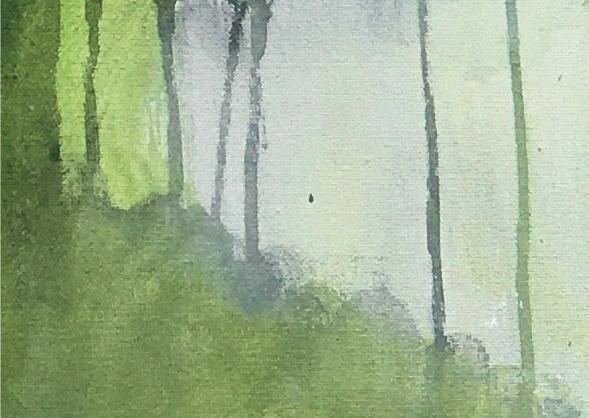





































Stripped back interpretations prove that less is more

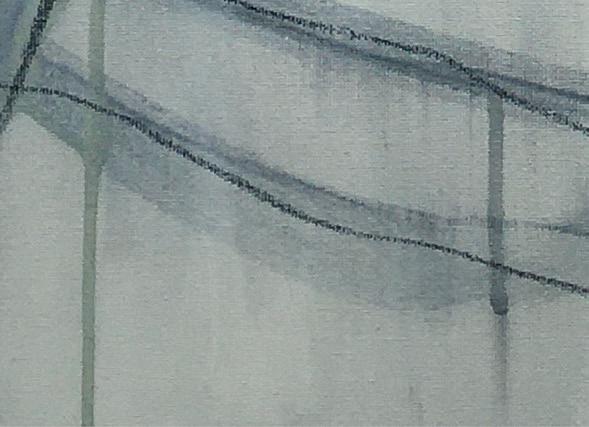




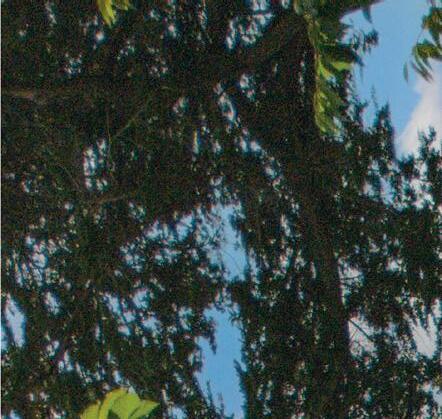











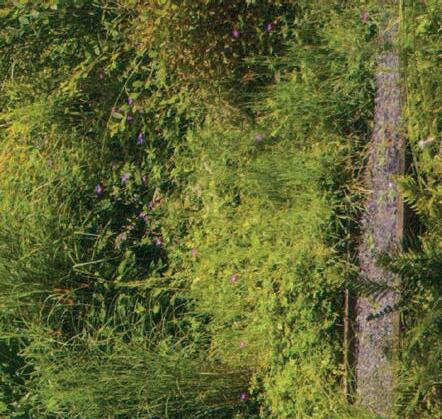



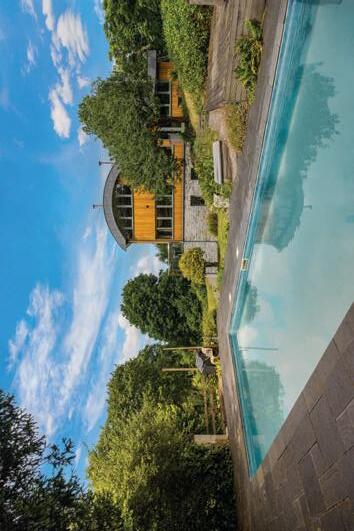



1. the act of driving something along
2. the flow or the velocity of the current of a river or ocean stream
1. to become driven or carried along, as by a current of water, wind, or air
2. to move or float smoothly and effortlessly
We invite you to continue your lifestyle voyage online. Find inspiring stories and uncover more luxury content on Instagram @driftcornwall. Join our exclusive e-journal community at drift-cornwall.co.uk to receive recipes, reviews and insider knowledge of some of Cornwall’s most-loved luxury destinations.
driftjournal.co.uk
driftjournaluk
A JOURNAL FOR THE DISCERNING


On the cover
‘The Morning Remembered Me’, mixed media on canvas by Maria Floyd, as featured from page 28. mariafloydart.com

Head of Client Management
Des Glover – 07535 585613
des.glover@enginehousemedia.co.uk
CEO
Ben Pratchett – 01326 574842 ben.pratchett@enginehousemedia.co.uk
Chairman & Founder
Andy Forster – 07711 160590 andy.forster@enginehousemedia.co.uk

PROUD
DRIFT is published by: Engine House Media LTD
Holbrook, The Moors, Porthleven, Cornwall TR13 9JX
www.enginehousemedia.co.uk
www.levenmediagroup.co.uk
Editor Hannah Tapping
hannah.tapping@enginehousemedia.co.uk
Creative Designers
Spencer Hawes
Jamie Crocker
Finance & HR Manager
Charlotte Forster
charlotte.forster@enginehousemedia.co.uk
Credit Control
Tracy Dart – 01326 574842
tracy.dart@enginehousemedia.co.uk
ISSN 2632-9891
© All rights reserved. Material may not be re-produced without the permission of Engine House Media Ltd. While Drift will take every care to help readers with reports on properties and features, neither Engine House Media Ltd nor its contributors can accept any liability for reader dissatisfaction arising from editorial features, editorial or advertising featured in these pages. Engine House Media Ltd strongly advises viewing any property prior to purchasing or considerations over any financial decisions. Engine House Media reserves the right to accept or reject any article or material supplied for publication or to edit such material prior to publication. Engine House Media Ltd cannot take responsibility for loss or damage of supplied materials. The opinions expressed or advice given in the publication are the views of the individual authors and do not necessarily represent the views or policies of
Engine House Media Ltd. It is suggested that further advice is taken over any actions resulting from reading any part of this magazine.
Engine House Media Ltd is a multi-platform media business with a passion for everything Cornish. Visit www.enginehousemedia. co.uk to find out more. Our mission is to create READ-WATCHEXPERIENCE media opportunities marrying together consumers with the fabulous businesses across Cornwall. Our publishing and marketing teams are specialists in creating print and online communications, devised to achieve a range of marketing objectives. With over 20 years of marketing, brand management and magazine experience we develop effective communications that deliver your message in a credible and creative way. We operate across all media channels, including: print, online and video.
The modern world is often frenetic and a place that becomes filled over time with the inevitable paraphernalia and accoutrements of a life well lived. As we grow, we are constantly collecting; many items are material, others are mere memories or moments. However, there comes a time when we need to rid ourselves of the extraneous, adopting a less-is-more approach. Such simplicity and restraint can have a powerful impact, more so than complexity or excessive ornamentation. It’s a reminder to focus on the essentials and to find beauty in the simplicity of form and function, innovation and expression and an overarching passion for the natural world which surrounds us. Photographer and Director, Chris Tuff (17) takes a minimal approach to his work, reducing the elements of the landscape to form, shape,
colour and line in order to capture its essence. Similarly, artist Maria Floyd (28) employs pure colour and a minimal use of detail to maximum effect. It’s not just the creative world that benefits from the notion of stripping back, as Victoria Clark (69) exemplifies. Exchanging the intensity of a city trading floor to a slower pace by the coast, she has found tranquillity in her own life which, in turn, has enabled her to help others to do the same. A quieter and more gentle approach is also adopted by the family who run Wooda Farm (76). For nearly half a century they have been inviting guests to find meaningful connections, whether that be through spending time with family and friends, an immersion in nature or embracing the simpler ways of life. We hope that the narratives over the coming pages will help you to do the same.


We have an exceptional and loyal team here at Leven Media Group but as a fast-growth business we’re always interested in talking to outstanding individuals. If you’re a superstar of extraordinary talent then we would love to hear from you.
or

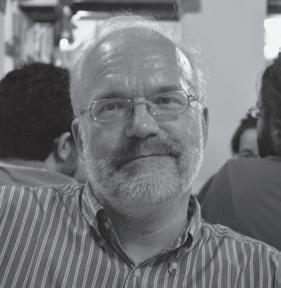



Proudly supporting DIVE PROJECT CORNWALL
Providing life changing opportunities for young people across the UK www.diveprojectcornwall.co.uk




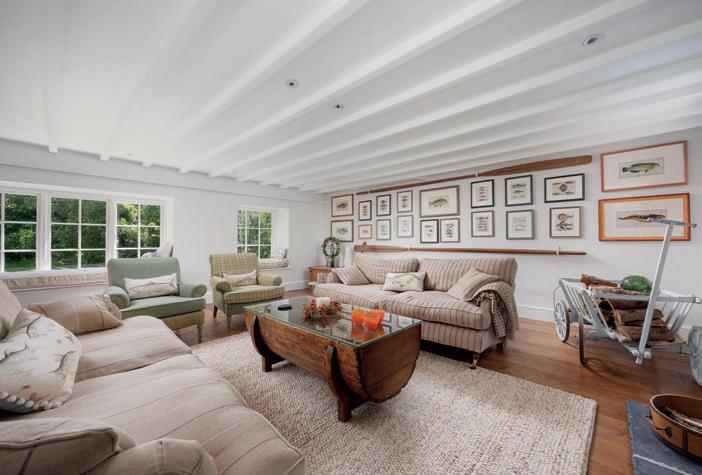
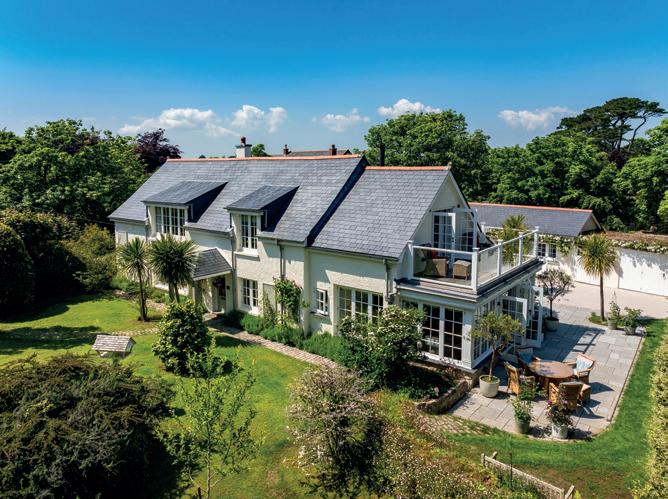









Ayr Cottage | Bossiney | Tintagel | PL34 0AY
£545,000 Guide
Situated in the coastal hamlet of Bossiney, tucked along a hedgerow lane and surrounded by its pretty shrub filled garden is Ayr Cottage. This quintessentially three bedroom detached Cornish cottage has a long rich history with 16th century origins and bags of original character. Thick stone walls, ceiling beams and huge inglenook fireplace reflect the historic narrative of this gorgeous cottage which is located just moments from the South West coastal footpath of North Cornwall.








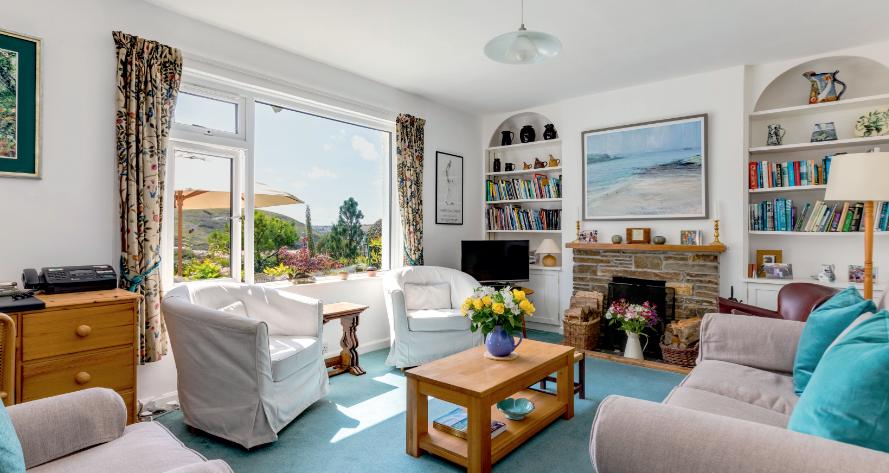




PLOT 3 TRELOYHAN MANOR MEWS | ST IVES | £3,000,000


A CONTEMPORARY FIVE-BEDROOM PROPERTY BENEFITING FROM A LARGE PLOT, GENEROUS BALCONIES AND VIEWS OVER ST IVES BAY.
BARVANJACK | MANACCAN | £750,000

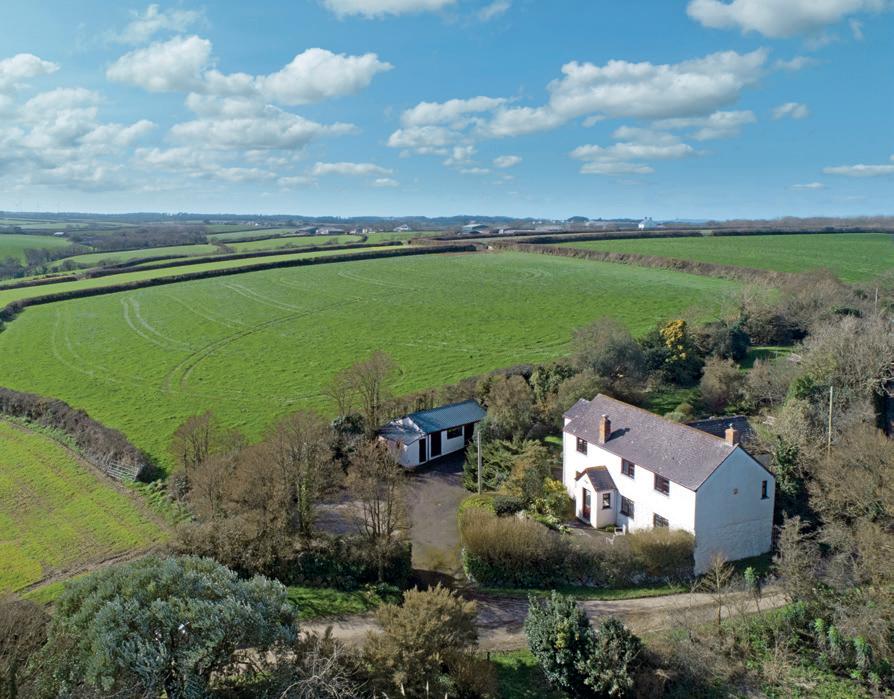
A SUBSTANTIAL 4 BEDROOM PROPERTY WITH STUNNING COUNTRYSIDE VIEWS IN A TRANQUIL SECLUDED SETTING. AMPLE PARKING, GARDENS AND GROUNDS OF APPROXIMATELY 1/ 2 ACRE.

CHY-AN-GWEAL FARMHOUSE | ST IVES | £1,250,000



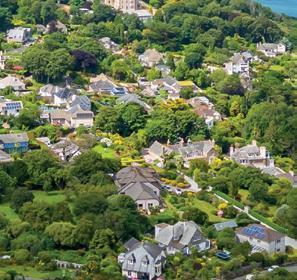



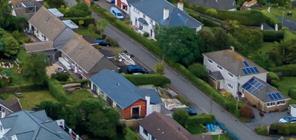

IMPRESSIVE FAMILY HOME IN CARBIS BAY WITH A SPACIOUS INTERIOR, BEAUTIFULLY LANDSCAPED GARDENS, GATED PARKING, AND CONVENIENT LOCATION IN WALKING DISTANCE OF ST IVES.


EDGEHILL | BUDE | £595,000

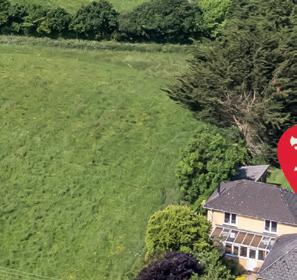





A UNIQUE 4-BEDROOM PROPERTY, WITH EXPANSIVE GARDENS EXTENDING TO APPROXIMATELY TWO-THIRDS OF AN ACRE. CONVENIENTLY LOCATED NEAR BEACHES AND AMENITIES.








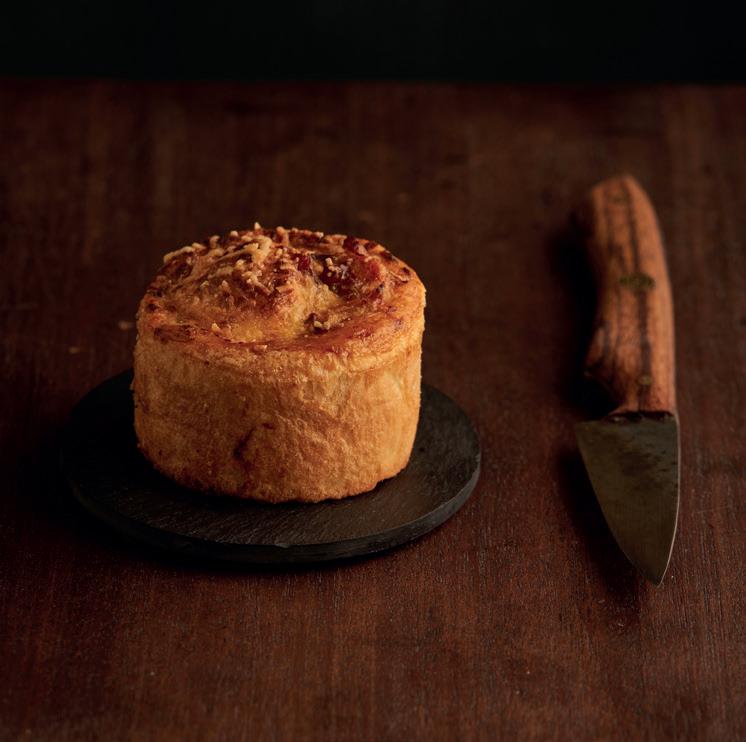








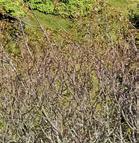





17 ELEMENTAL DRAMA
Through the lens of Chris Tuff
28 NOTES ON CANVAS
Maria Floyd’s stripped back interpretations of the landscape
41 THE EDGES OF ENDSLEIGH
An enchanting hotel with a 200-year-old story to tell
53 THE SPIRIT OF THE SAINT
The tale of an artisan gin, distilled in the heart of west Cornwall
60 LUXURY HOMES
At the pinnacle of the Cornish market
69 ALL IN ORDER
From trading floors to tranquillity: a journey of transformation and resilience
A family run business that has been welcoming visitors to its farm for almost a century
85 A NEW DAWN
Recipes from Tom Hannon, chef patron of The Rising Sun
92 JOIN THE MOVEMENT
A Cornish dive watch is taking luxury aesthetic and rugged practicality to new heights
97 A SENSE OF PLACE
The work of Andrew Giddens wields the spirit of Cornwall
104 TAKING SANCTUARY
Puffin Island, the only habitat in the UK to house rescued Atlantic puffins
110 TIPPING THE BALANCE
The inner world of Arthur Lanyon’s paintings
122 EVENTIDE
The last word from Mark Hillson








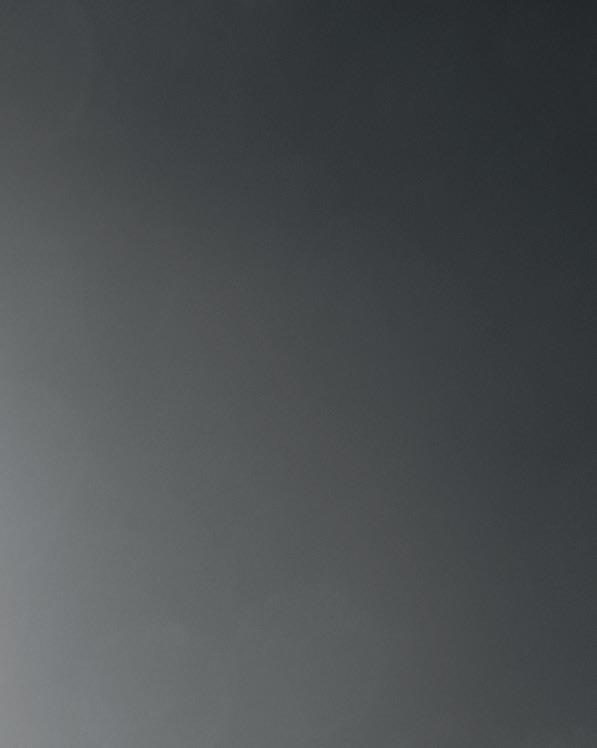



















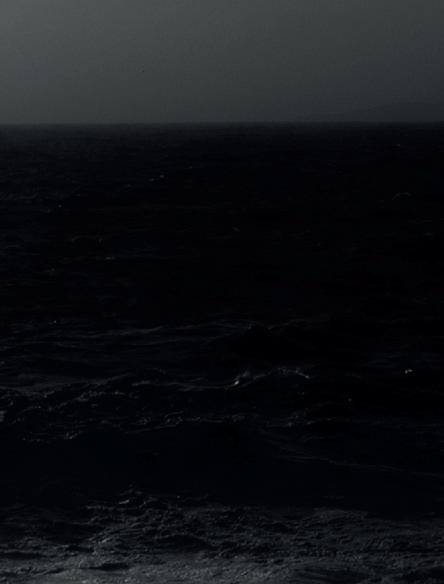



Chris Tuff, international award-winning photographer and director, takes a minimal approach to landscape using strong composition, colour and form to define his work.
Chris’ relationship with monochrome photography began as a child: “My father taught me to process my own films and make prints in his darkroom. I was immediately captivated by the alchemical magic of seeing images slowly appear on the paper and how my vision of a moment became a physical artefact, a photographic print. Although I now rarely work with film, the art and craft of printmaking in the darkroom still influences how I approach the postproduction of images today. I seldom do much to an image digitally that I would not be able to achieve in a darkroom.”
For photographers working before the mid 20th century, monochrome was the only practical choice, but the creative appeal of black and white photography remains an enduring genre of choice for many contemporary ‘art’ photographers. It removes the distraction of colour and is an abstracted, less literal representation of the world. It also, arguably, invites a more creative interpretation of the subject that demands a particular way of seeing and thinking, reducing imagery to the influence of lighting, shadows, contrast, texture, form and patterns.

“For me, black and white captures the elemental drama and primal spirit and beauty of the Cornish coast in a way that colour cannot,” explains Chris. “Perhaps because I work primarily in black and white, my approach to colour photography differs from other photographers and tends towards the abstract and minimal. The quality of light and unique colour palette of the landscape in Cornwall has attracted generations of artists, in Summer, the sea and sky are intense shades of cerulean and turquoise and in Winter, they become steely cobalt and indigo blue.”
Much as Chris uses the physical attributes of the landscape, as compositional elements in black and white, his colour images use the contrast and juxtaposition of colour and shades as compositional forms, inspired more by artists such as Rothko than other photographers, reducing the elements of the landscape to form, shape, colour and line to capture its essence.
Chris is a member of the Lizard Arts Collective who exhibit a selection of work in the Stableyard Gallery at the historic Trelowarren Estate. His limited-edition prints are made to order.
christuffphoto.com






















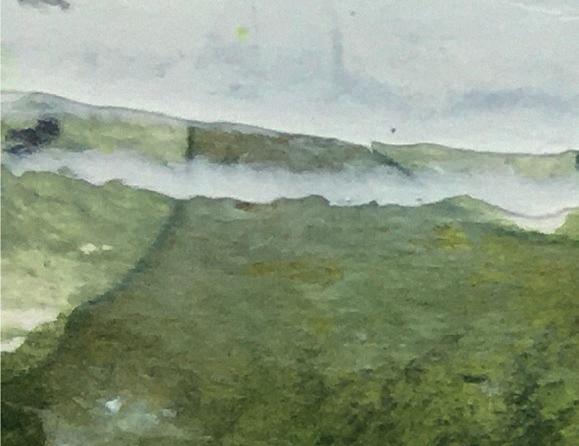









Maria Floyd’s stripped back interpretations of the Dartmoor landscape prove less is truly more.
Artist Maria Floyd tells me she was just 16 when she decided to become a painter: easy decision, tough path to walk at that age, I reply. Maria, though, had talent and commitment, and she went on to study at Chelsea College of Art and to graduate from Goldsmiths College, two of the most prestigious art schools in Europe. At Goldsmiths, during the early nineties, she took the toughest and most in-depth academic route, studying for a combined Fine Art and Art History degree, and what she learned continues to influence the progression of her career.

It was, and still is, a highly progressive school. “I was there in the wake of Damien Hirst, so it was an amazing time. I was pretty naive artistically speaking, so being exposed to such a wide variety of work by painters who were doing such extraordinary things really broadened my horizons.” In the studio, Maria and her fellow students were encouraged to “strip everything back, which was a good thing, to just question what we were making, and why”.
“Goldsmiths was quite a shock for someone who had grown up with a love of figure drawing and the Renaissance,” says Maria.
As her studies progressed, the emphatic colour and highly physical processes of artists like Mark Rothko and the American Abstract Expressionists became an important influence on her work. “It was also the scale and composition of Rothko’s work that inspired me,” she says, “and his ability


to make each work sing with such a little amount on the canvas.” I immediately note that Maria’s own work might be defined in the exact same terms: large scale works which employ pure colour and minimal use of detail to maximum effect. “Rothko’s Chapel works were also a good bridge for me, because they were partly inspired by the art and architecture of French and Italian churches, by the awe and reverence you feel when you walk in, and that linked directly to my interest in Renaissance art.”
Awe and reverence are feelings I associate with large scale abstract works, but Maria’s works are clearly figurative, though broken down into simplified elements. Ideas of awe in her work relate entirely to her subject, the spectacular south west landscape, while her marks reflect the gestural movements of expressive abstraction. “I am always trying to express the power of the elements in my work,” says Maria, “to give a fleeting glimpse of a moment in the landscape, and the experience of being in it. It is so incredibly beautiful here,” she says of her home on the western edge of Dartmoor. “It’s the wildness of the place, that’s what I love about it. It is one of our last grand, empty landscapes. The sky here is vast, and you can look out across the moor and not see a single person or anything man made. That leaves room only for the weather, which is different every day.
I can go to the same spot each day to sketch and it will never look the same. In fact, I don’t explore as much as I should because one place can keep inspiring my work for weeks on end, but that develops a real intimacy I think. You have to spend a lot of time in a place before you can properly express it. That’s when you get to develop a kind of shorthand in your drawing and painting, because a place has become so familiar.”
I like Maria’s use of the word ‘shorthand’. It perfectly describes her recent works. Shorthand, by definition, is minimal notation that is highly charged with content: in the same way, Maria’s marks are simple but impactful notations on her subject. How, I ask her, does she begin to build these paintings full of lines, marks and drips. “I always start flat on the floor,” she explains, “especially with the very big works. I will have drawings all around me from my plein air sketchbooks, and other experimental drawings I’ve made in the studio. I work with charcoal first, to sketch out the composition. That’s the draughtsman in me. I like to keep drawing elements in my paintings.” I examine the long, liquid lines and the sgraffito detailing in her works. Even the incidental drips and runs seem almost drawn. “Then I will work into the surface, scraping back and dribbling paint, but I have to keep walking






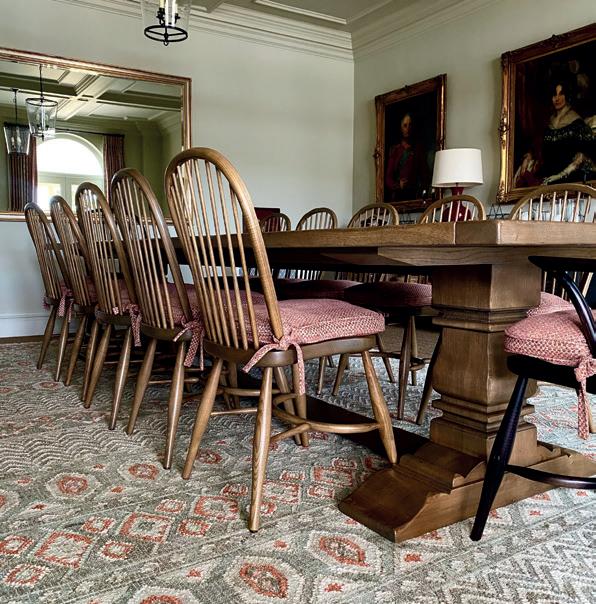

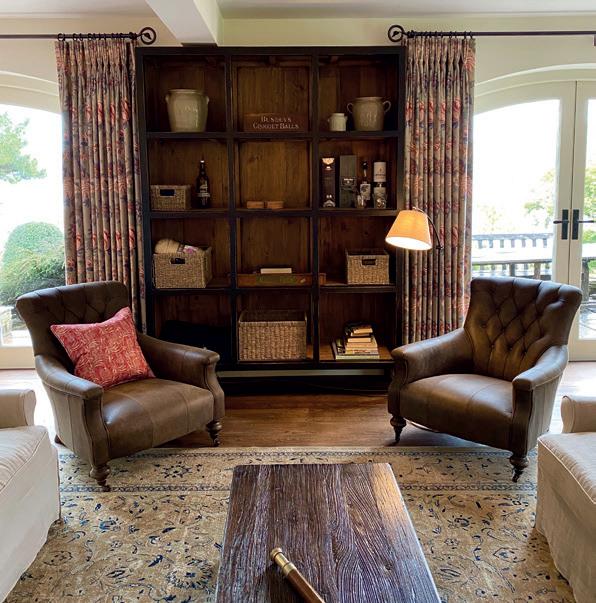

away because I don’t want to overdo it. That’s crucial, that the works are not overdone, that’s their strength.”
I ask her about the walking away, the back and forth, the classic tussle between artist and canvas. “There is always a tussle,” she says. “There is a battle going on. Sometimes the work gets the better of me, and sometimes I manage to keep control.” How then, does she know she has won, and the work is finished? “Quite simply, when I walk away, the ones that I’ve won I want to keep. The others go. I scrape them back and start again. A painting has got the better of me if it is overworked, if I have failed to achieve spontaneity and
liveliness. And space on the canvas is very important. There has to be space for a personal relationship between the viewer and the painting. The painting must not bully the viewer.”
I agree with Maria entirely on that point. That is why I have always loved abstraction. Abstract art says ‘let’s talk’, while figuration says ‘take me or leave me’. “And scale is important too,” she adds. “It allows you to really express. You can be more gestural. Quite often I use my whole arm to paint, so I need space on the canvas. Scale brings a sense of gravitas to an artwork as well, it makes more of a statement. With big paintings you have to
ABOVE
‘Echoes of Yesterday’ – acrylic and charcoal on canvas






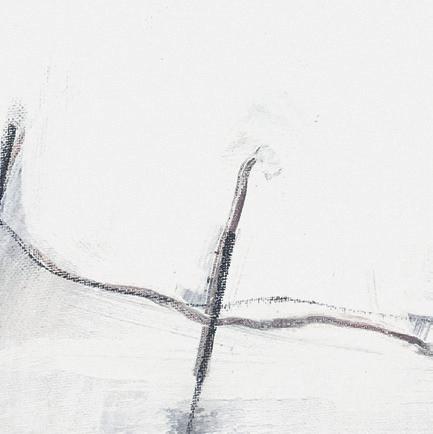


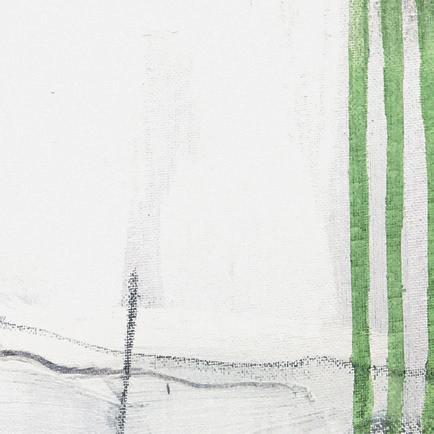






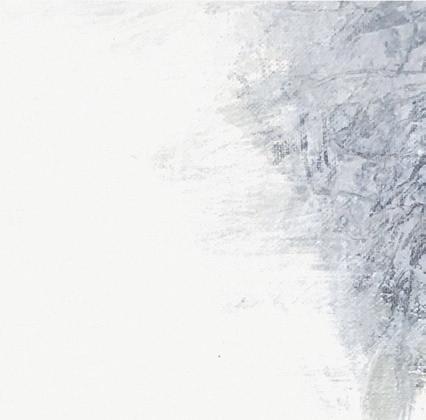


ABOVE
‘Following the Path’ – mixed media on canvas













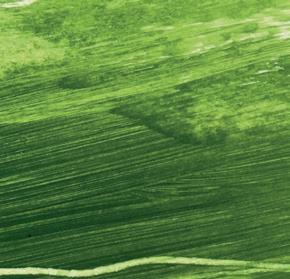








step back. They have more presence. You have to really respect an artwork to take it on, on that large scale, and to appreciate its independence from you.” We talk about the colours in her work. In contrast to the hot colours of the expressionist paintings she admires so much, Maria’s colours tend towards the cool, though they all have a vibrancy and glow. “I have always had a bias towards earth colours,” she tells me, “particularly greens and graphite now. Those colours arrived in my work when I moved to Devon.”
Maria previously lived in London, then moved to Trebarwith Strand in north Cornwall. “Like most people, we came
to the South West specifically for the beauty of the landscape. Now we are in Devon, on Dartmoor, which I had never even seen before we moved here. I was completely surprised by it. I have never been a painter of tranquil landscapes, the work I made on the North Cornwall coast was always dramatic, but Dartmoor is something else. It is such a special place. It draws you in and can become quite an obsession. It has inspired me to really push my work, to strip things back even further in all my paintings, and to really find my voice. Dartmoor is that kind of truly commanding landscape.”
mariafloydart.com


WORDS BY ROSIE CATTRELL
With a 200-year-old story waiting to be uncovered, an English countryside paradise borders this enchanting hotel.
If you owned over a third of Devon in the early 1800s, you might consider seeking out the perfect setting for your summer country home a rather daunting task. However, for the Duke of Bedford and his wife Georgiana, one particular spot in the county presented an opportunity for a residence surrounded by exceptional natural beauty, fit for a Duchess.
Rooted in the fresh green fold of the Tamar Valley, Endsleigh’s enchanting riverside setting seems sampled straight from the pages of a fairy tale. Amidst 108 acres of breath-taking gardens and wild woodlands

dotted with follies and grottos, there’s a kind of magic to be found wandering the grounds of this Grade I-listed estate, now under the ownership of expert hotelier, Olga Polizzi.
Acquired in 2004, almost 200 years after the first stone was laid, Olga and her daughter Alex channelled their famed expertise into bringing the property back to life, transforming Endsleigh into the luxury hotel that we know today. “Endsleigh’s a rather beautiful, unusual house. When I bought it,” Olga recalls, “I really bought it more with my heart than with my head. There are
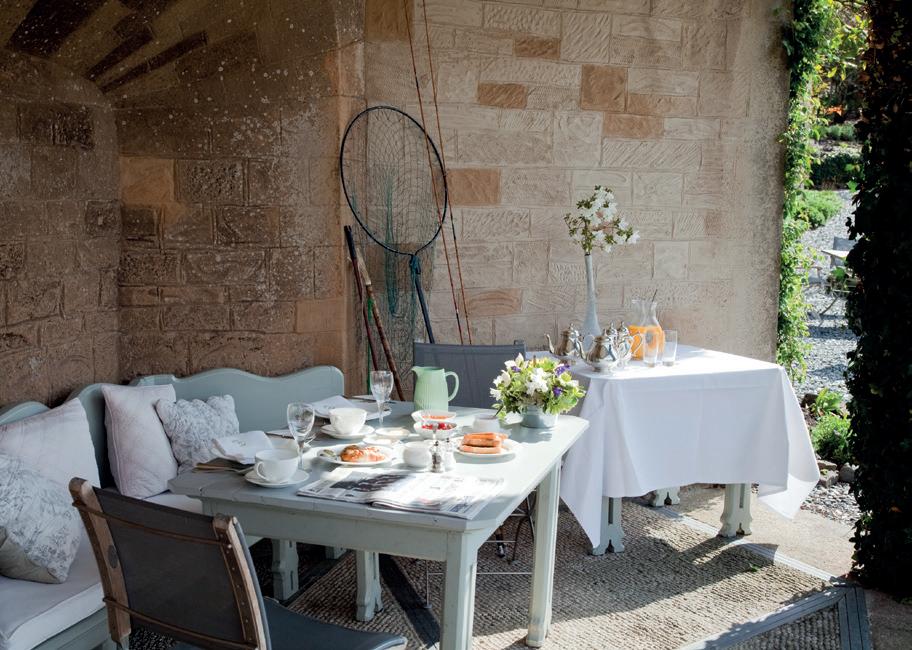






not many places in England left like this.” In a state of disrepair, restoring the property back to its former glory would have been no easy task, but now any visitor is privy to the magic of days long gone by as they explore the charming character which has been so carefully revived.
“It’s a very special place. All you’ll hear is birdsong, the wind, nature – there’s no light pollution. If you want to relax, read and walk, it’s the perfect place,” Olga reflects. Complete with a well-stocked library, seemingly endless reading nooks and comfortable perches with astonishing countryside views – not to mention a wonderful immersion into the natural world as you wander the grounds alongside the tranquil murmurs of the River Tamar – I’m inclined to believe her.
gardens that run from the hotel to the river are reminiscent of 19th century days spent wandering the lawns at leisure with the Duchess in search of today’s picnic spot.
While Endsleigh’s Eden-esque exterior is of another world entirely, the hotel itself draws you into carefully considered interiors, crafted by Olga in such a way that honours the property’s lavish and romantic past, but also meets their exceptional standards for a luxury stay to rival some of the best in the world.
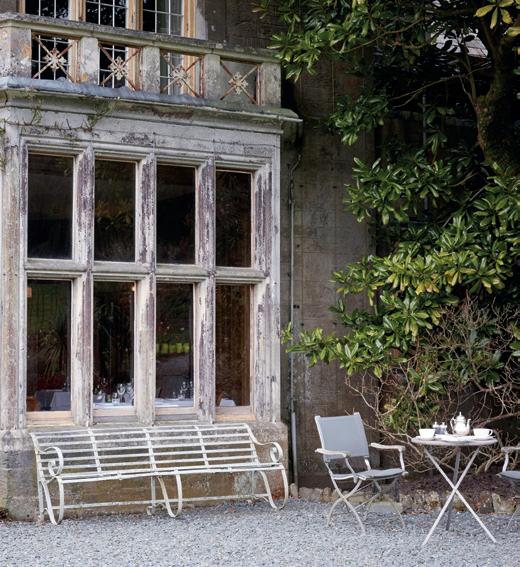
Designed by Humphry Repton himself as the final commission of his career, the Endsleigh gardens are the crown of the estate, which, understandably, came to be known as ‘The Garden Paradise of the West’. Towering champion trees guide you through the woodlands, and giantleaved gunnera line the dell in summer, transporting you to the tropics. The formal
With endless crests of the Bedford’s relatives and friends edging the wood-lined walls, the Endsleigh dining room remains almost exactly as it was in the days of the Duke and Duchess. Even original wallpaper put up by the Bedford’s lines some of the bedrooms in a delightfully touching nod to the past, the birds and flowers imprinted on the paper having watched the long years unfold.
Each room and every suite have been individually designed with a classic, uncluttered elegance in mind, a pleasant combination of antique pieces adorning the spaces along with the familiar comfort of simple modern touches. Olga’s latest
completion of two new suites in the old stables presents yet another enchanting Endsleigh experience, bringing the room count up to 21.
What used to be the hay loft of the old stables, Suite 22 (known at The Lady Olga Suite) proved to be an exciting project, with sloping ceilings and lots of dormer windows providing a challenge when it came to designing the rooms. “The spaces have worked out well and are quirky and charming. This suite is particularly romantic, cosy and unusual, somewhere I would like to stay myself,” Olga considers.
Find your way across the courtyard and through the old stable door to walk over original one-inch concrete tiles into a panelled hallway housing a unique 18th century statue of a mother and child. Colefax and Fowler’s ‘Greenacre’ wallpaper guides you up the staircase to a beautiful 19th century French writing desk overlooking the stable courtyard, while a pretty bedroom is set into the eaves to the right, beckoning a restful night’s sleep. A bespoke floral sofa at the foot of the bed keeps the secret of a pop-up television hidden within, allowing for comfy movie moments.
Opposite is the bathroom with its freestanding bath and shower, and through the pantry and bar area is a spacious sitting room that invites lingering glances out over the extensive gardens, along with the cosy addition of a wood-burning stove and a dining table for six. One last door reveals a cabin room fit for a younger family member, with every shutter throughout the suite a replica of the original and rather unique Endsleigh shutters.

To uncover Suite 21, you must enter from the gardens of the hotel, the hallway parallel to a large, quirky bathroom complete with a freestanding rolltop bath and walkin shower. A bunkbed room welcomes little ones, while the large bedroom and sitting room boasts high ceilings and a sumptuously stylish finish. A calming colour palette throughout makes this a most relaxing space in which to unwind in the fresh natural light.
Taking inspiration from the surrounding countryside, Endsleigh’s food offering is as exceptional as you might imagine for such a setting. In keeping with an age-old tradition, afternoon tea is the highlight of each day spent here, and it’s easy to imagine the





Bedford’s whiling away an afternoon with finger sandwiches, cakes and a pot of tea. For those seeking a secluded sunny spot in the grounds, a preordered picnic afternoon tea packed into a returnable rucksack allows for delicious summer moments. As Alan Titchmarsh so eloquently puts it, “if a hotel were ever built in paradise, it would be like Endsleigh – a fairy tale cottage set in an Arcadian landscape with delicious food and blissful rooms.”
Days spent at Endsleigh feel like endless illustrations of a nostalgic daydream come to life. Naturally, a setting as enchanting as this invites star-crossed lovers to wed with nature and loved ones all around.
From intimate ceremonies in the likes of Shell House, its walls adorned with ancient shells and coral, to the blissfully romantic garden occasion sheltered by canvas and accompanied by the hum of bees and gentle birdsong – sunlit days and starlit evenings cast you back to magic Endsleigh moments shared by a Duke and his Duchess.
With only the stars to illuminate the sky overhead each night, and the sleepy sounds of the Tamar to lull you to into peaceful dreams, romance roams free on the edges of Endsleigh.
thepolizzicollection.com









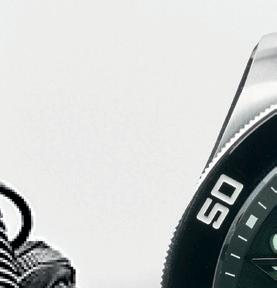





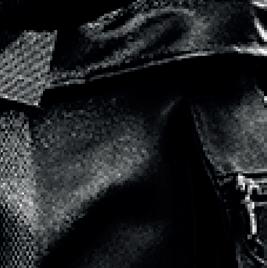






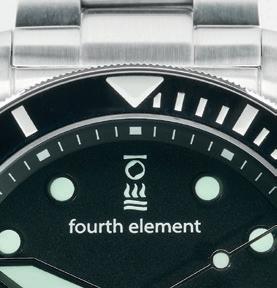

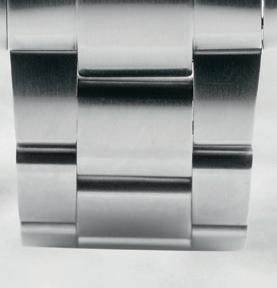














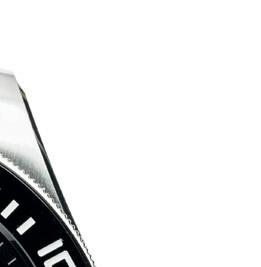






















Named after the vast reaches of the open ocean, the Pelagic combines exceptional craftmanship with high-specification engineering. Designed in the UK and hand-built in Switzerland it is rated to a depth of 500m. The Pelagic ensures exacting timekeeping with a stunning automatic mechanism, powered by a Swiss made precision self-winding movement. This is a watch suitable for the most extreme environments on Planet Earth.


































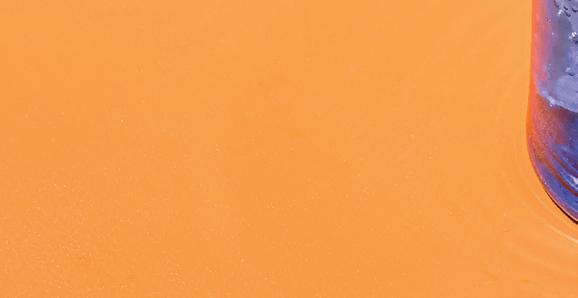














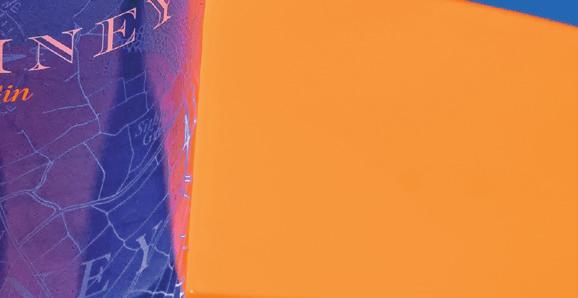





WORDS BY HANNAH TAPPING





The tale of an artisan gin, distilled in the heart of west Cornwall, destined to be sipped the world over.
All good conversations begin over a long table, and this one’s no exception. I’m meeting with Cornish gin producers Wendy and Greville Richards to find out the story behind a spirit that is making waves in the food and drink community. Greville is no stranger to production. Coming from a Cornish farming background, he co-founded his own vegetable farm in his early twenties. Southern England Farms (SEF) is now a multimillion-pound national supplier of brassicas, courgettes and more, to retailers that include the supermarket giants Tesco and Sainsbury’s.

Staying true to Cornish roots, we meet at their home in the parish of Sithney and as we sit down to coffee, I’m curious as to why the move into distilling. Greville begins the tale: “We wanted to create a gin that was distilled right here in our parish; one that
would stand out from the crowd. We knew the kind of taste we wanted to achieve and so we brought in the expertise of Matt Servini and Vanessa Rapier of The Craft Distilling Business. As a master distiller, we worked closely with Matt to land on the perfect recipe.” Wendy adds: “I’ve always been an avid cook, but obviously there are different ingredients to consider when making a spirit. We worked really closely with Matt, who’s been pivotal to the brand in creating the perfect recipe and Vanessa was instrumental in guiding us through the legal, licensing and duty process.”
They began by blindtesting five sample recipes created by Matt and based on their desire to create a smooth gin with a warm finish: “After a few tweaks,” explains Wendy, “we landed on the finished recipe for Saint Sithney Gin. It’s unashamedly juniper heavy, as we











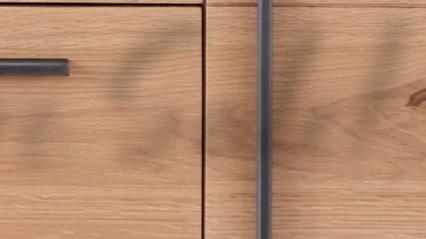




wanted to maintain that signature ‘piney’ taste, but there’s a citrus note in there as well from orange and lemon, a little bit of lemongrass and some kaffir lime for freshness.” The specific botanicals are, of course, a well-guarded secret but Wendy does share that the lovely warm end-notes come from a touch of cardamom; there’s no harsh burn at the back of throat with Saint Sithney Gin.
Their still, affectionately also named Wendy, is housed in a distillation plant just up the road. “It all starts with the base spirit,” continues Wendy, “which I then combine with our carefully selected botanicals and Cornish water.” Wendy is Saint Sithney’s chief distiller and has learned her craft from the masters. From inception to the first bottling took very little time, such was Wendy and Greville’s passion for the project.

Saint Sithney Gin launched its first bottles in December 2023, and it very soon became the talk of the Duchy. Keen to see how it would be received by Cornish restaurants, Greville dispatched a bottle to friend and renowned local chef, Jude Kereama. “He called me after a busy Christmas,” said Greville, “and his words to me on the phone were… “It’s not good.” I was devastated, until he followed it up with… “It’s absolutely exceptional!” It turns out that Jude and a friend had spent a Sunday afternoon sampling it with different slices and tonic variations. Jude’s favourite serve is with a local Navas tonic water, and he came to the conclusion it didn’t need a slice. We would say different, as our personal preference is added citrus and while I like Fever Tree, Wendy prefers a traditional Schweppes tonic – but that’s the beauty of Saint Sithney Gin, it’s so versatile everyone can find their own favourite serve.”
Saint Sithney Gin has had no small amount of investment put into it from the very start: “We knew what we wanted and we have invested considerably in making this the very best product we could,” says Greville. Self-funded, there’s been no inward investment from third parties, testament to the belief that Saint Sithney Gin is a shot above the rest.
As well as being stocked in discerning Cornish bars, restaurants – notably the Great Cornish Food store in Truro, The Pig at Harlyn Bay, the Bedruthan Hotel, Hooked on the Rocks and Trevisker’s Kitchen – Saint Sithney Gin has received acclaim across the Tamar. You’ll find the distinct blue bottle gracing bars across the southern counties, as well as recently being



adopted by Tom Kerridge in London whose bar manager, Declan Wilkins declared it as having “great balance and very refreshing flavours – perfect for a Martini.”
Much care has been taken with the branding of Saint Sithney. The English bottles were hand-picked for their deep blue colour and each one is beautifully decorated with a map of the area, peppered with icons of the mining heritage that define the local landscape of the distillery. A sense of place is important to Wendy and Greville; even their single and double bottle despatch packaging is sourced from FlexiHex, a sustainable packaging brand whose headquarters are just down the road.
As we chat, it’s clear that Wendy and Greville have big plans for Saint Sithney. Next on the horizon is an orange flavoured gin, aptly named Cornish Sunset; I’m allowed a sneak preview of the bottle and it’s so reminiscent of the deep colours we are treated to at sundown on summer days that I’m instantly transported to sandy shores, looking to the horizon with a Saint Sithney in hand.
The promise is of a warm, soothing gin that will have spicy undertones yet maintain that slight bitter edge of orange that will cut through the sweetness just perfectly. The recipe’s still in its formative stages, but when launched it’s certain to be sipped with aplomb. There’s talk of more flavours,
an alcohol-free version and even a Cornish tequila-style spirit in the offing. Further down the line, Marsinney Farm, which has been in the Richards family for centuries and lies at the heart of Sithney parish, has been pinpointed as a growth area. At just 32 acres, it’s too small for the industrial farm machinery that keeps the wheels of SEF turning, but perfect as a dedicated distillery and visitor centre, as well as a place to grow botanicals as Greville explains: “The nine fields can be planted with everything from juniper and blackthorn to elderflower, and maybe even some agave…”
The future looks bright for Saint Sithney Gin; internet sales are growing significantly and two area sales managers are soon to be joined by a dedicated export manager. If you’re travelling in or out of the county you might just catch sight of the brand’s four impressive wrapped Conway Bailey trailers that are taking the Saint Sithney message across the UK’s road networks daily.
I leave the warm welcome of the Richard’s table and the parish of Sithney, quite simply wishing the day away as I’m eager to celebrate their success with a Saint Sithney serve of my own. I’m thinking along the same lines of the venerable Mr Wilkins… it’s must be almost Martini-o’clock!





Seafront is a beach front property with unobscured panoramic sea views right across the bay to St Ives.
This detached property is ideally situated to benefit from the arc of the sun as it illuminates the bay in the morning and the front of the property into the late evening; making it the perfect place to enjoy a drink or dinner and watch it sink below the horizon as the day draws to a close.
Seafront would make for a highly versatile acquisition. It currently features a wellappointed annexe, perfect for guests or for providing additional income as a holiday let. The sperate owner’s accommodation also offers beach views, with a broad sitting room facing the sea and a spacious kitchen leading to a rear terrace. It has a master bedroom with en suite and a guest bedroom with a family bathroom.
Located in Porthtowan, Seafront is situated upon a sizeable plot with both front and private rear gardens.
SEAFRONT Guide price: £1.375M
ROHRS & ROWE 01872 306360 info@rohrsandrowe.co.uk
rohrsandrowe.co.uk





Discreetly situated in a wooded valley on the edge of a coveted village is this hidden gem.
Garden House is a beautiful example of progressive mid 20th century modernist architecture, discreetly set in a wooded valley on the edge of the coveted village of St Mawgan on the north Cornish coast. This impressive property is set in over an acre of wonderful mature gardens and grounds cultivated over the last 45 years, with stunning views out across the valley and treetops.
The house boasts endless luxury, with two swimming pools, one inside and one out, and luxury materials and finishes at every turn. On the ground floor you’ll find three large double bedrooms, while the fourth bedroom is a selfcontained studio with a small, fitted kitchenette and its own ensuite bathroom. The first floor is where the influence of Scandinavian design is most evident, with its impressive t-shaped living room, from where there is access to the magnificent master bedroom. A fantastic sunken marble bath is a welcome surprise, as well as the vast expanse of windows and sliding doors to the rear and the front of the house.
GARDEN HOUSE Guide price: £1.3M
JACKIE STANLEY 01841 532555
sales@jackie-stanley.co.uk
jackie-stanley.co.uk
A contemporary property finished to the highest standard enjoying expansive rural views.
The Hide is an exquisite, newly-built contemporary residence, offering unparalleled privacy and panoramic rural views from every angle. Tucked away at the end of a 400-meter driveway in Veryan, near Truro, this magnificent home features four ensuite bedrooms, a sunken sitting area, and a seamlessly open-plan living space. The high-specification finishes include a bespoke kitchen by Mayflower with Silestone worktops and a central island, Italian stone flooring with underfloor heating and an elegant circular steel staircase.
The master suite has its own terrace and a spalike bathroom, along with his-and-hers dressing rooms. Outside, there is a delightful terrace leading out from the kitchen, a large flat lawned area and electric gates secure the property. There is already ample parking, with the additional benefit of planning permission being in place for a four-car garage. The Hide epitomises luxury living, blending cutting-edge design with serene countryside charm, making it an ideal retreat for those seeking privacy and sophistication.
THE HIDE Guide price: £2.65M
JACKSON-STOPS 01872 261160
cornwall@jackson-stops.co.uk


jackson-stops.co.uk









Upalong and The Rocket House are two highly versatile properties located in the heart of Trebetherick. The main semi-detached period residence Upalong, which has three bedrooms and three bathrooms, was originally built in 1840 as the Trebetherick coastguard’s cottage. The smaller adjacent onebedroom Rocket House, which has a strong letting history, was once used to house the rockets that were used in Henry Trengrouse’s off-shore rescue system. Both properties enjoy far-reaching views of the countryside as well as easy access on foot to the village’s amenities.
When it comes to sought-after locations on Cornwall’s north coast, Trebetherick is up there with the finest. Situated at the mouth of the Camel Estuary, it offers easy access to some of the finest beaches, most prestigious golf courses and Michelin-starred restaurants. The newly upgraded A30, a mainline station at Bodmin and Cornwall Airport Newquay nearby provide access to London and beyond, making this a great opportunity to purchase in the Duchy.
UPALONG AND THE ROCKET HOUSE Guide Price: £895,000
JOHN BRAY ESTATES 01208 862601 sales@johnbrayestates.co.uk


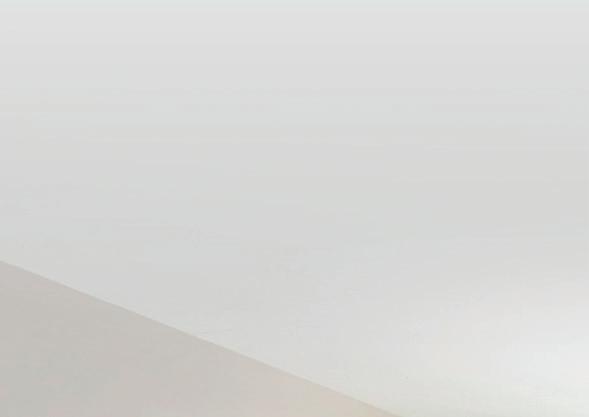

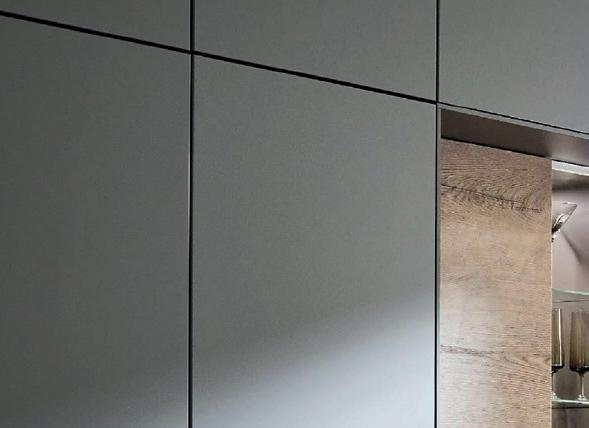










Unit 7 Alphinbrook Court, Alphinbrook Road, Marsh Barton, Exeter, EX2 8QR
Combining German quality and design with exceptional service.






At Kutchenhaus, you will find the best and most affordable high quality German kitchens with a wide range of modern handleless, contemporary or classic designs.
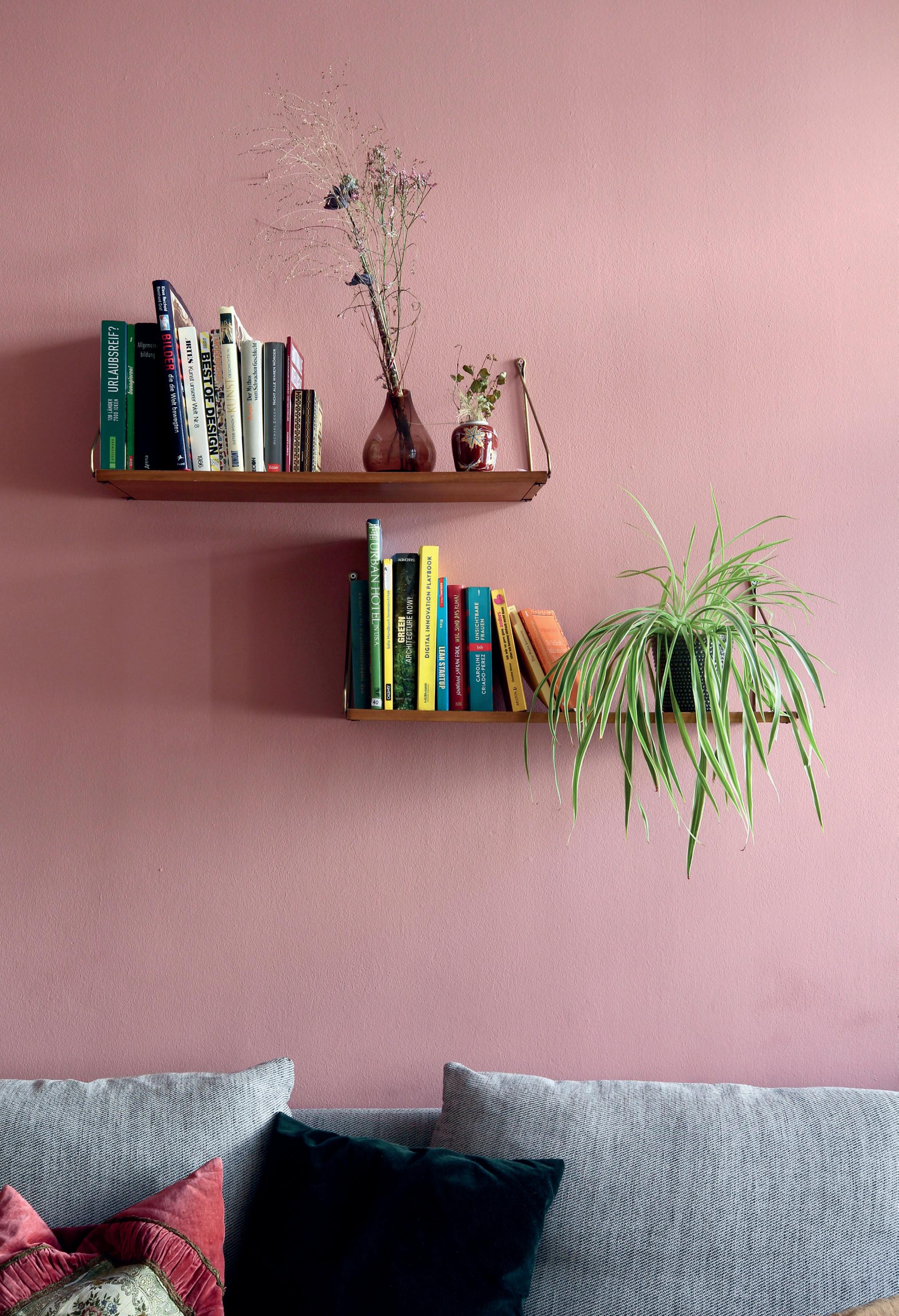
From trading floors to tranquillity: a journey of transformation and resilience.
In the world of high finance, where stakes are perpetually high, life often pivots on a knife’s edge. This was the life Victoria Clark once led, navigating the frenetic energy of trading floors, where every second counted and every decision could shift fortunes. However, the narrative of her life took a dramatic turn after a traumatic event, propelling her from the intensity of the financial world to a profoundly different, yet equally challenging, vocation—helping others reclaim order and peace in their homes and lives.
Victoria’s story begins in the bustling financial hubs of London and Madrid, where she and her husband, once key players in the high-octane environment of money brokering, thrived amid the chaos. The trading floor was a battleground where screams of buy and sell orders were the norm, and the pressure to
perform was relentless. Yet, they found a certain exhilaration in this life, feeding off the adrenaline that came with the territory.
Their life, however, was not without its darker moments. Victoria’s husband endured a harrowing experience which, coupled with the cutthroat nature of their profession, left lasting scars, necessitating a move from the fast-paced trading floors of Madrid to Cornwall’s calmer shores where they would find respite, peace and a chance to heal.

Victoria’s journey of transformation began as she sought to find meaning and stability in her life. She channelled her energy into creating a new venture, ByVictoriaClark, a company dedicated to professional organising and decluttering. This shift from managing financial portfolios to managing household
INSET













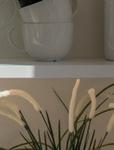








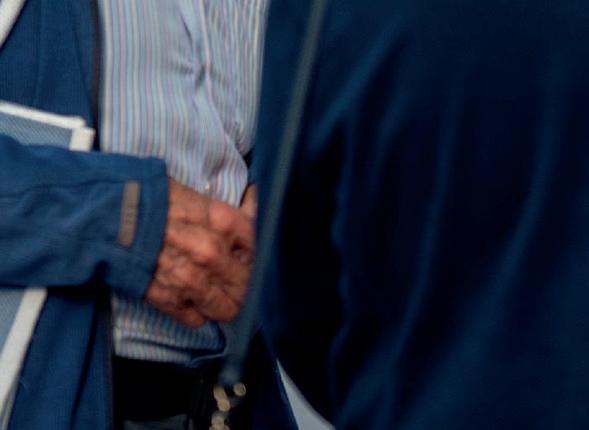


5TH & 6TH OCTOBER























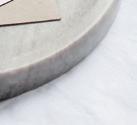
chaos was more than a career change; it was a lifeline. “The foundation of my business was laid on the principles of empathy and understanding,” explains Victoria. “Drawing on my own experiences of upheaval and distress, I wanted to bring order and serenity to others facing similar chaos. My business is not just about tidying up spaces; it’s about transforming lives, offering support where it’s needed most, and bringing a sense of peace to those overwhelmed by clutter and disorder.”
Her clients range from those who have inherited property filled with generations’ worth of belongings and those who are simply overwhelmed by the demands of maintaining multiple residences to those who are looking to declutter before putting their property on the market. “When you move house, it’s so much easier if you can declutter before,” says Victoria. “Reducing unnecessary items not only cuts down on moving costs but also simplifies the process, making new spaces more inviting and functional from the outset.”
Victoria’s approach is deeply personal and compassionate. She often finds herself working with clients who are in dire need of help, ranging from elderly individuals unable to maintain their homes to families coping with the aftermath of a loved one’s death. Her work with Age UK and other local charities highlights her commitment to making a tangible difference in people’s lives, regardless of their financial situation.
Perhaps one of the most poignant aspects of Victoria’s work is the personal stories she encounters. From helping a client to regain control of her home after losing a loved one to assisting another overwhelmed by hoarding tendencies, Victoria approaches each case with dedication and compassion. “I was able to help a client with mental health problems who was living in terrible conditions, surrounded by filth and neglect, yet yearning for dignity and normality. It took patience and perseverance, but by approaching the task with dignity and respect for someone who was clearly struggling I was able to help transform their living space, providing not just physical order but emotional relief as well.”
Another story involves a client who had lost his wife and was living in a house so cluttered he could barely move around. Victoria’s intervention not only restored the functionality of his home but also his sense of independence and pride. It’s stories such as these that underscore the transformative power of her work and the profound impact it can have.
While the work is rewarding, Victoria tells me that it’s not without its challenges.
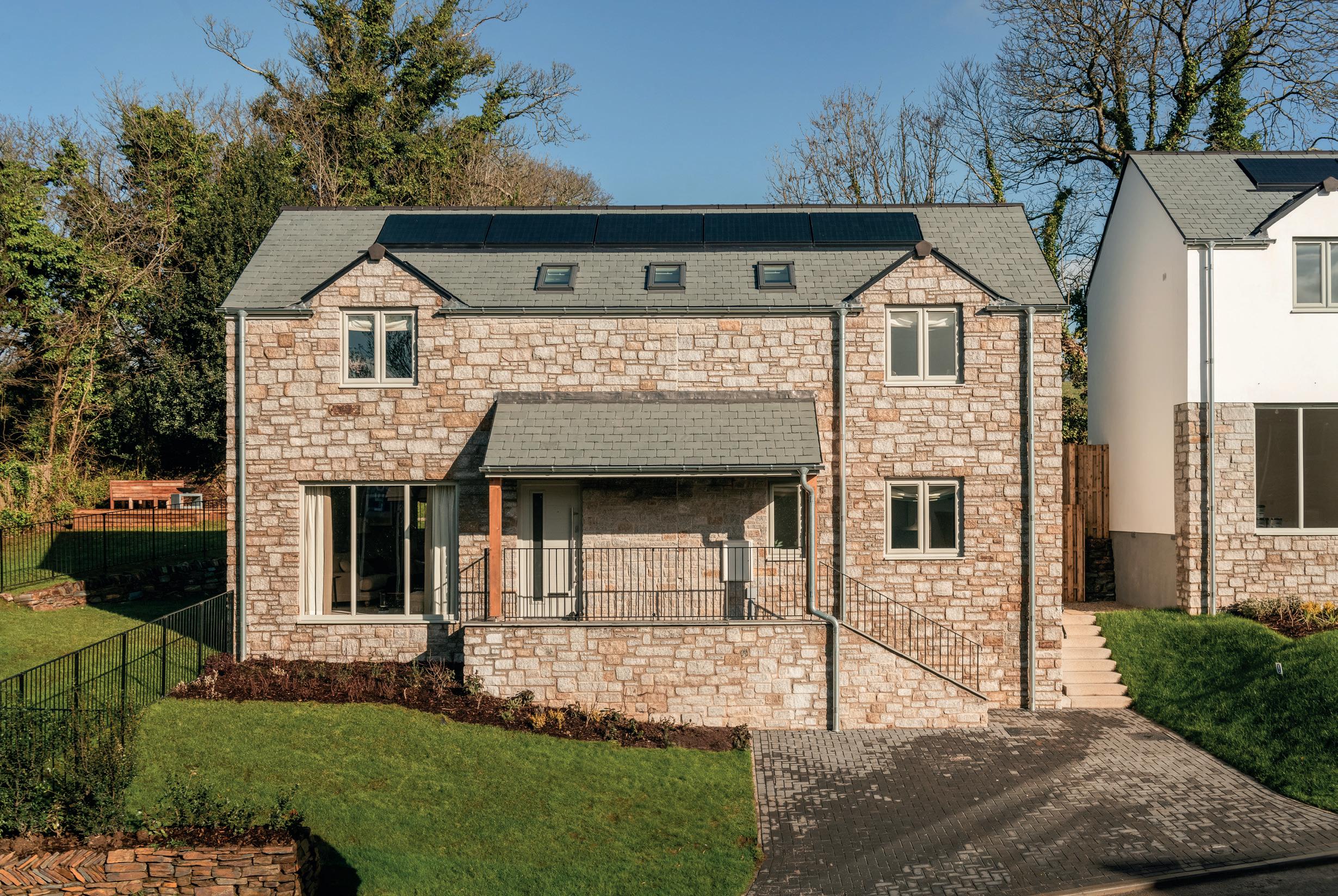



SHOW HOME OPEN TUESDAY - SATURDAY 10am - 5pm
SHOW HOME OPEN TUESDAY - SATURDAY 10am - 5pm

SHOW HOME OPEN TUESDAY - SATURDAY 10am - 5pm

SHOW HOME OPEN TUESDAY - SATURDAY 10am - 5pm
SHOW HOME OPEN TUESDAY - SATURDAY 10am - 5pm


“I am often faced with mental health issues, sometimes resistance from clients, and the emotional burden of dealing with traumatic situations,” she explains, “sometimes it takes a lot for inner resilience and commitment to keep going, but I find solace in the progress I help others achieve, whether it’s through decluttering a space or offering emotional support during tough times.”
As part of her service, Victoria helps her clients to donate unwanted items to charity. She works closely with local charities, such as Growbaby Truro ensuring that items find new, meaningful purposes. This philanthropic aspect of her work is not just a byproduct but a core component. She invites charities to reach out to her, fostering a network where decluttered items are redistributed to those in need.
Victoria is a member of the Association of Professional Declutterers and Organisers: “It’s such a great community to be part of,” she says. “It’s a hugely supportive network (contrasting sharply with the competitive environment of the trading floor!) offering a refreshing change and a source of continuous inspiration.”


Her background in the high-pressure world of finance has equipped Victoria with a unique set of skills—stress management, strategic thinking, and an unyielding work ethic. It’s clear that this blend of corporate acumen and personal empathy makes her a formidable force in the realm of professional organising. “Making the move to Cornwall has seen a profound transformation in me as a person. It has reshaped my understanding of what success and fulfilment looks like. I’m no longer driven by financial gain alone, I now measure my success by the positive impact I can have on others’ lives.”
This story is a powerful reminder that life’s greatest challenges can often lead to its most meaningful transformations. Victoria brings light and order into the lives of those who need it most, proving that true luxury doesn’t always lie in material wealth but in the peace and comfort of a well-organised, harmonious home. “It is a practice that goes beyond aesthetics, fostering a sense of peace, purpose, and connection, which in turn allows my clients to live with intention and clarity.”
byvictoriaclark byvictoriaclark.co.uk

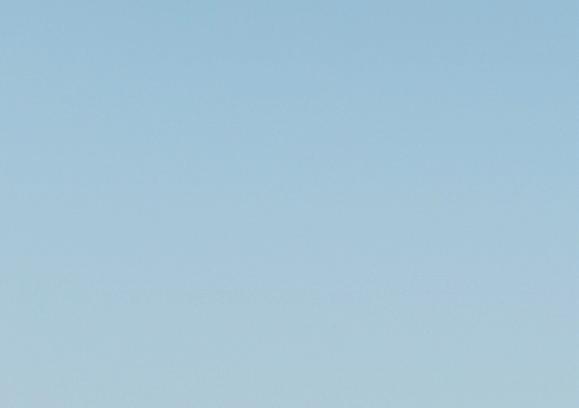



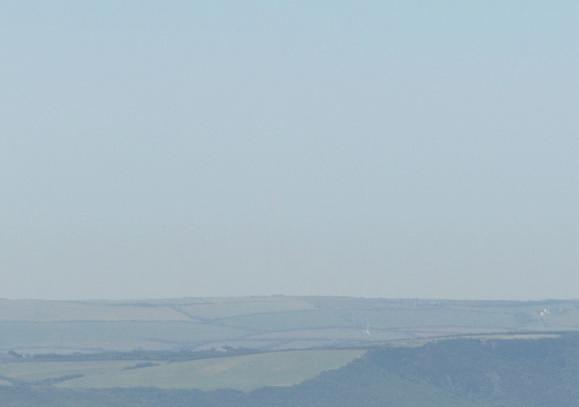


WORDS BY HANNAH TAPPING




AIn conversation with Wooda Farm Holiday Park, a family run business that has been welcoming visitors to its five-star farm since 1975.
rriving at Wooda enforces a slowing down from the frenetic pace of modern life. Set in 40 acres of parkland, close to the coastal town of Bude, visitors find that from the moment they arrive their shoulders drop and there’s an instant reconnection with nature and the simpler ways. Whether it’s a touring pitch, a luxurious lodge or a gorgeous holiday home, all benefit from some of the finest facilities in Cornwall and the Wooda team work tirelessly to create holiday options for all, encouraging quality time spent with loved ones in the countryside.
do. We believe in creating a welcoming environment where guests can experience the charm and tranquillity of Cornwall, just as our family has cherished for generations. This family-oriented ethos is reflected in our commitment to providing a personalised service, maintaining high standards of cleanliness and fostering a sense of belonging among our guests and staff.

How has running a family business in Cornwall shaped the values and operations of Wooda?
Running a family business in Cornwall has deeply influenced the values and operations of Wooda Farm Holiday Park. Our roots in the community inspire us to prioritise warmth, hospitality and a strong sense of family in everything we
Can you describe some of the sustainable practices that have become a cornerstone of your operations and how these have evolved over time?
Sustainability is at the heart of our operations at Wooda. Over time, we have implemented a range of eco-friendly practices, from using renewable energy sources to minimise our carbon footprint, to encouraging guests to recycle and reduce waste during their stay. We have also invested in energy-efficient infrastructure, such as LED lighting and water-saving systems. Our commitment to sustainability extends to preserving the natural beauty





of our surroundings, including the careful management of our land to support local wildlife and biodiversity. As we continue to evolve, we are exploring new ways to reduce our environmental impact, such as expanding our use of solar power and increasing our support for local, sustainable suppliers.
What are some of the unique challenges you face running a family business in today’s environment, especially in Cornwall?
One challenge is balancing the demands of modern tourism with preserving the traditional values that define us. With more and more commercial businesses appearing around Cornwall, it can be tough to remain competitive, but we hope that our family values and drive towards sustainability help to set us apart from the rest. We are striving to challenge preconceptions, saying goodbye to the stereotypical crowded amenities and noisy entertainment and hello to a tranquil retreat surrounded by the natural beauty of Cornwall, alongside five-star facilities and some of the best accommodation options in the county.
rewards far outweigh the challenges. We take immense pride in being able to share the beauty of Cornwall with our guests and in supporting our local community. The satisfaction of seeing families return year after year, creating lasting memories at Wooda, is incredibly fulfilling.
How has the COVID-19 pandemic transformed your interaction with other independent Cornish businesses?

The COVID-19 pandemic underscored the importance of community and local collaboration. During the pandemic, we made a concerted effort to support and collaborate with other independent Cornish businesses, recognising that we were all in this together. This experience has strengthened our commitment to fostering these relationships and supporting the local economy in any way we can.
What steps have you taken to create diverse holiday options that cater to different budgets?
The seasonal nature of tourism in Cornwall can also be challenging, requiring us to be resourceful and adaptable. However, the
At Wooda, we believe that everyone should have the opportunity to enjoy a Cornish holiday, regardless of their budget. To that end, we have created a range of accommodation options to suit different



needs and price points. From luxury lodges with stunning views to cosy caravans and camping pitches, we offer something for everyone. We also frequently offer special deals and packages to make our holidays even more accessible. Additionally, our onsite facilities are designed to provide value, with complimentary access to activities like our playground, nature trail and secure dog field, ensuring guests can enjoy a full holiday experience without breaking the bank.
How do you ensure that guests can disconnect and truly relax in the countryside?
We encourage our guests to embrace the natural beauty of our surroundings and take a break from their screens. Our park is designed to help people unwind, with expansive green spaces, woodland walks and breathtaking coastal views. We offer a variety of outdoor activities that invite guests to immerse themselves in nature, such as woodland walks, mountain biking trails and segway tours. For those looking to relax, our peaceful gardens and wooded areas provide the perfect setting for some screen-free downtime.
Can you share any stories or feedback from guests who have had memorable experiences while staying with you?
Our guests are at the centre of everything we do, and we are truly fortunate to have a very high proportion of guests returning to us year on year (a few of them since we opened in 1975!). One of our most popular
onsite activities is our nature trail which also features some Cornish pixies who are hiding in the woodland. We hear lots of lovely stories from guests who remember taking part in the pixie trail when they were young, who have now returned with their own children to experience the magic!
What measures have you put in place to promote quality time and meaningful interactions among families who visit?
Promoting quality family time is a key focus at Wooda. We offer a variety of activities designed to bring families together, including badminton and tennis and our outdoor play areas, where children can explore while parents relax nearby. Additionally, our accommodation options are spacious and comfortable, providing the perfect setting for families to relax and connect after a day of activities. We believe that the simplicity and tranquillity of our countryside setting naturally encourage families to slow down and enjoy each other’s company.
How important is the community and local collaboration and what initiatives are you involved in to support independent businesses in Cornwall?
Community and local collaboration are at the core of our philosophy at Wooda. We understand that our success is intertwined with the prosperity of our local community. We actively support independent businesses by sourcing local produce for our on-site shop and food and
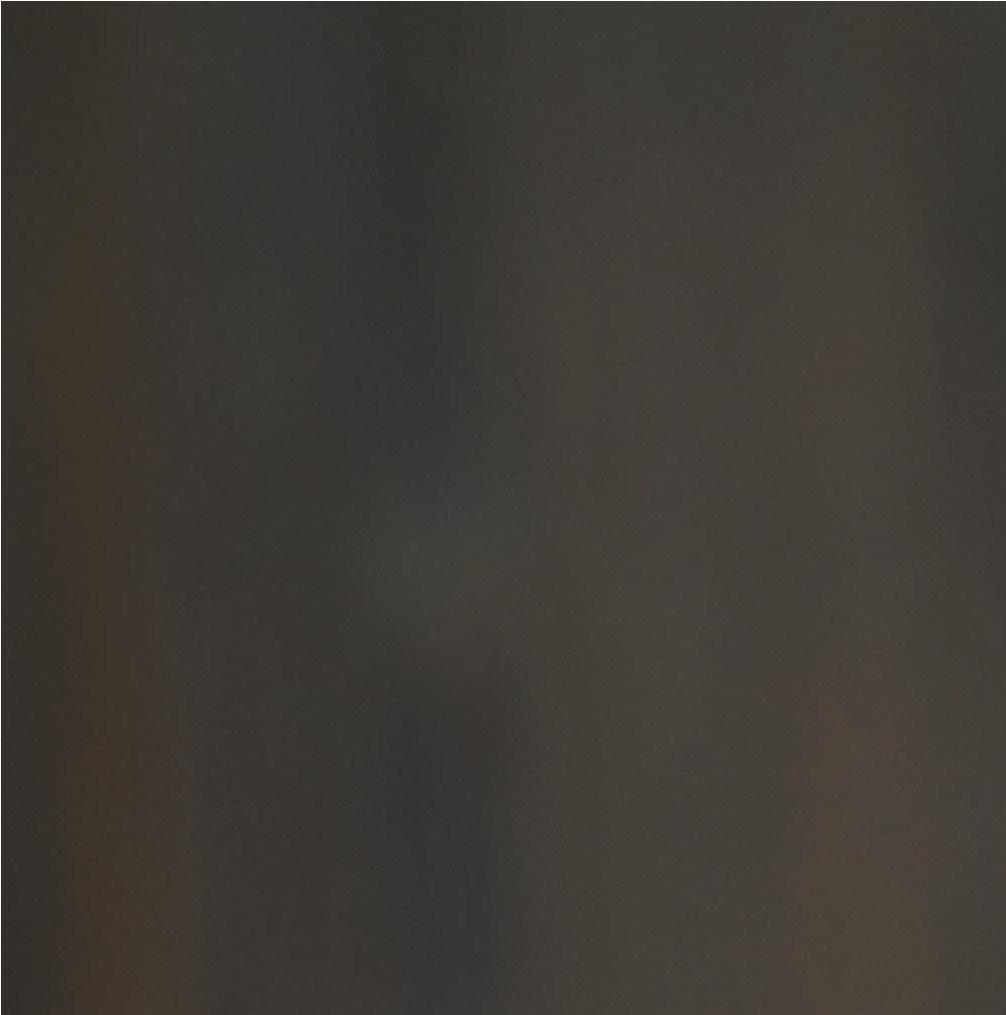


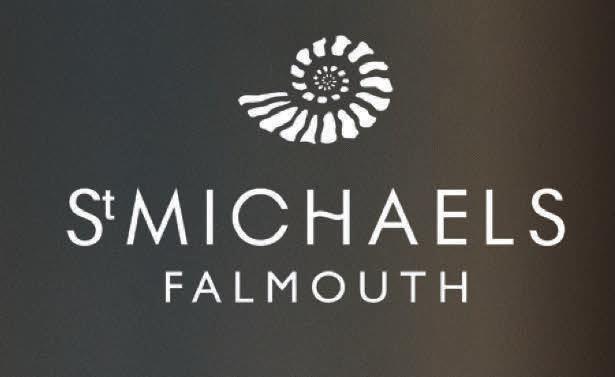










drink venues and featuring local artisans in our gift shop. We are also involved in initiatives that promote sustainable tourism, working with local organisations to preserve Cornwall’s natural beauty and cultural heritage. We also support many local charities, such as the RNLI and Bude Sea Pool. Our commitment to the community is ongoing, and we are always looking for new ways to support and uplift our local partners.
How do you foresee the future of tourism in Cornwall evolving, and what role do you see Wooda playing in this landscape?
The future of tourism in Cornwall is likely to see a continued emphasis on sustainability, quality experiences and
a deeper connection with nature and local culture.
As more people seek out authentic, meaningful travel experiences, we believe that Cornwall’s natural beauty and rich heritage will attract visitors looking for more than just a typical holiday. At Wooda, we see ourselves playing a significant role in this evolving landscape by continuing to offer high-quality, ecofriendly accommodations that respect and celebrate our natural environment. We aim to be a leader in sustainable tourism in Cornwall, providing guests with memorable experiences that highlight the best of what our region has to offer while also preserving it for future generations.
wooda.co.uk
ABOVE Making memories at Wooda

WORDS BY TOM HANNON
Celebrating ten years at the heart of the city; Chef Patron Tom Hannon, of multi-award-winning gastro pub The Rising Sun, delivers a selection of his flavour-led, indulgent dishes.

A rich, indulgent bread, very versatile; a decadent treat to break bread before a meal or delicious as a loaf to pull apart and enjoy with a hearty stew or casserole.
MAKES EIGHT TO TEN ROLLS OR ONE MEDIUM LOAF.
INGREDIENTS:
For the dough:
300g strong bread flour
150g butter at room temperature
25g caster sugar
10g fresh yeast
3 medium eggs
6g salt
METHOD
Take all the dry ingredients for the dough and mix together using an electric mixer. Once the dry ingredients are combined, add the eggs. Mix until the eggs are combined and add the butter. Once the dough has come together, remove the bowl from the mixer and cover with a damp cloth. Leave to rest in the fridge for five hours.
Sweat off the sliced onion, chorizo and thyme on a medium heat in the rapeseed oil, constantly stirring, until the onions are soft and a light golden brown in colour. Remove from the pan and place on kitchen paper to drain the excess oil. Remove the dough from the bowl and roll out flat, to approximately a
For the onion compôte:
1 tbsp rapeseed or vegetable oil
2 medium onions, sliced 130g chorizo, sliced into matchsticks
10 sprigs thyme, leaves only 50g parmesan, grated
For the egg wash:
1 medium egg Splash of milk
5mm thickness. Sprinkle the onion compôte mix evenly over the surface and add the grated parmesan on top.
Roll the dough up into a sausage (think jam roly poly) and cut into approximately 5cm slices. Place the portions into greased circular dress rings/moulds so you can see the swirl of the onion compote on top. Eggwash the tops and then place on a baking tray and cover with a damp cloth. Keep them in a warm dry place until the dough has doubled in height (when in dress rings), or doubled in size if making a loaf. Bake at 160°C for 16 minutes.


INGREDIENTS:
300g dry mash potato (approximately six medium potatoes)
90g Italian ’00’ pasta flour, sifted 60g parmesan, finely grated
1 whole egg yolk beaten
METHOD
Wash the potatoes with skins on and place onto a baking tray of salt and bake for 1 hour at 180°C or until cooked through. Once cooked, cut the potatoes in half and scoop out the soft potato discarding the skins. Pass the scooped potato through a moulin or fine drum sieve.
In a bowl, weigh out the correct amount of mash. Whilst the mash is still warm, light and fluffy add the flour, parmesan and salt, saving a little of the flour for rolling. Using only your fingertips, mix the flour, parmesan and mash together forming a breadcrumb like mixture. Add the beaten egg yolk and work into the mash in the same way until a smooth dough has formed. Be careful not to over work the mixture as it will become tough and elastic.
With the saved flour, dust a work surface and in batches carefully roll the gnocchi mix into
10g salt
10g chives
10g parsley
To serve: Beetroot
Six baby leeks
a long sausage, of desired shape and size. Cut into pieces and pinch in the sides and gently squash the tops with a fork leaving an indentation of the prongs.
Transfer the gnocchi pieces to a deep pan of hot seasoned water left on a moderate heat but not boiling. The gnocchi will sink, then after a few minutes float to the surface. As they do, lift them out into ice water, then drain and gently dry on kitchen paper
Finely slice some beetroot (on a mandolin if you have one) and deep fry for 4 minutes on 140°C degrees. Add some butter to a pan and fry the gnocchi on a medium heat until golden brown
Slice and blanche six baby leeks. To serve, delicately layer the baby leeks, gnocchi and beetroot crisps. To elevate an already elegant dish, add some fresh truffle.
INGREDIENTS:
250ml stout
250g butter
200g caster sugar
100g dark sugar
METHOD
Pre-heat the oven to 180°C and line a baking tray or roasting tin with greaseproof paper. Melt the chocolate on a bain marie or use a bowl placed over a pan of boiling water, ensuring the bowl is not touching the water. Cream the butter and sugar with an electric mixer, then add the eggs and continue to mix. Add the yogurt and the stout and then
150ml yogurt
175g plain flour
2 1/2 tsp bicarbonate of soda
2 eggs
35g cocoa
the sieved flour, cocoa and bicarbonate of soda on a low speed. Finally add the melted chocolate
Bake at 180°C for 40mins. Place on a wire rack and once cooled, cut into squares. Serve with vanilla ice cream and pouring cream for an indulgent dessert.


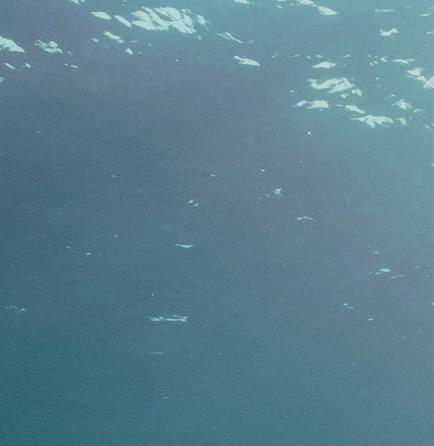
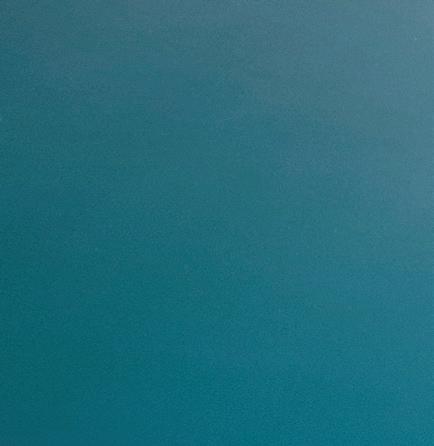














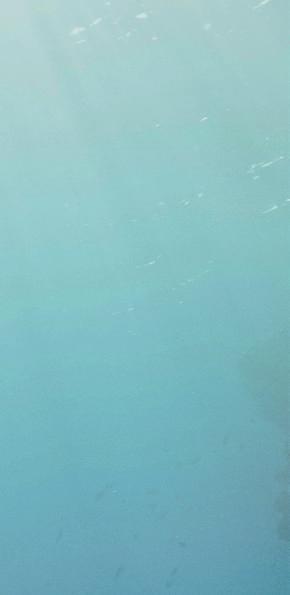


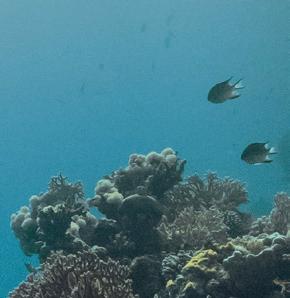

WORDS BY HANNAH TAPPING



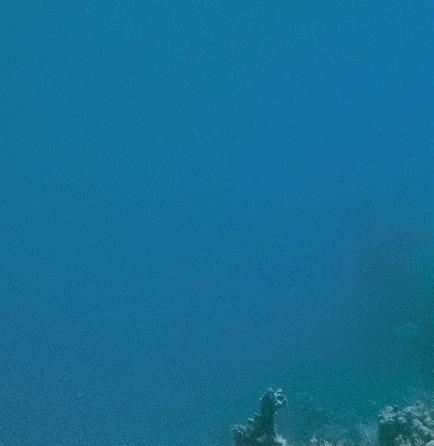








From the depths of the ocean, a Cornish dive watch is taking luxury aesthetic and rugged practicality to new heights.
The story of dive brand, fourth element begins on Cornwall’s western-most tip, a place where the sea and its shores define life. Paul Strike grew up surrounded by family who had an affinity with the sea; whether that be Uncle John, the local fishmonger in his home village of Porthleven or generations of Strikes who volunteered for the Coastguard. Exposed to diving at the tender age of 12, Paul’s passion for the ocean was ignited, but as his interest grew, he realised that, while surfing was well-catered for in terms of equipment, the dive industry was sadly lacking in both technical and lifestyle kit.
him, where the pair formed dive brand fourth element.




A dive trip to Egypt with friend, Jim Standing, made the pair realise that not only did they share a passion for the ocean, but that they had both identified a gap in the market for a dive brand that could produce high-performing technical kit, while at the same time fostering a lifestyle brand identity that would offer a community to those with a similar passion across the world. Paul relocated back to his home county in 1999, bringing Jim with

While the beginnings of the business were humble, their foresight and ambition were everything but. They began by sourcing fabric technology for a base layer; their aim, to make a garment so good that every diver worth their salt would want one. Influential members of the world’s dive community gave their seal of approval at an early stage, and 25 years on, the brand has now been adopted globally by the dive industry. Fourth element technical clothing and drysuits are used in some of the most extreme places on earth and it’s the brand of choice for leading dive teams, including the FBI and the British Special Forces.



Everything at fourth element is underpinned by their ethos to be OceanPositive; a term coined to represent the business’ approach to sustainability, which runs from product and packaging to their professional practice. For example, several lines in fourth element’s OceanPositive range is made with






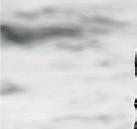
















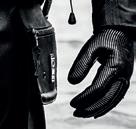







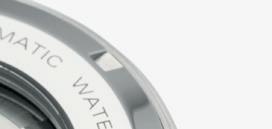































ECONYL® nylon that is made from a combination of recycled ghost fishing nets and other waste nylon products; while their Rec Fins are made from consumer and industrial plastic waste with the equivalent of approximately 120 plastic bottles rescued from waste streams in every pair of fins.
Fourth Element has achieved global reach, not least due to its directors Paul and Jim always pushing the boundaries of possibility, all while maintaining a love and respect for the ocean. Such growth could have seen them relocate to a more central UK location, but they have stayed true to the brand’s beginnings with the fourth element head office and warehouse remaining in Helston, Cornwall.
As a business, it continues to innovate and expand with an agility that sees new and exciting products coming to the fore on a regular basis. The latest being a luxury dive watch, the first of its kind to come from a Cornish company. The pelagic, named after the unexplored zone of the open ocean that covers more than half of our planet, combines intricate engineering with an understated yet elegant design. With 26 jewels, the pelagic has a visible Swissmade automatic movement, ensuring precise timekeeping even under the most challenging conditions. Every detail has been designed to meet the demands of serious divers while maintaining the elegance expected of a luxury timepiece. The watch is encased in a lightweight brushed steel, a material chosen not only
for its durability, but also for its sleek appearance, making the watch as suitable for a deep-sea dive as it is to wear to dinner.
The pelagic is water resistant to 500m, a depth out of most divers’ range, only ever approached by professionals. The helium escape valve, positioned on the watch case opposite the engraved crown, allows the safe release of gases accumulated during long dives, making this watch as functional as it is aesthetic.
The pelagic is unashamedly rugged in its appearance, yet carries a sophistication that comes from an understated elegance in design. The sapphire crystal is scratch-resistant and anti-reflective, ensuring clarity in all conditions and the watch also comes with an interchangeable strap system, offering a choice between a stainless-steel bracelet for a more formal look and a rubber strap for more practical use.

The intricacy of the hand built Swiss movement adds elegance and intrigue, thanks to the crystal watch back, revealing the simply engraved movement inside, making this more than just a dive watch. As with all fourth element products, branding is considered and minimal, yet visible enough to show that the wearer is part of a dive community born on Cornish shores. The pelagic is no ordinary dive watch; it’s a statement for the modern explorer, designed by the sea, for adventures on the edge of the world.
driftjournal.co.uk/the-pelagic fourthelement.com

















WORDS BY HANNAH TAPPING
Perfectly imitating the relationship between light and water, the work of Andrew Giddens not only wields the spirit of Cornwall, but also an otherworldly atmosphere of movement and luminosity.
Capturing the essence of the Cornish coast is something many artists strive to achieve, with years of practice needed to reach that goal. Andrew Giddens has been painting the coastline since the mid 90s and has since become a household name in impressionistic seascapes. Andrew is based in west Cornwall and lives with his family and dog and has a gallery/studio in Perranuthnoe, near Mount’s Bay.
After studying at Falmouth and Bournemouth art colleges, Andrew’s popularity and name spread quickly after a few of his pieces were purchased by Sir Tim Rice: “He is a worthy addition to the great and long-established line of artists from this wonderful county.” Over the next ten years he showcased and exhibited in
top galleries around Cornwall, including Beside the Wave amongst others. In 2016 Andrew went solo, exclusively painting and selling from a rustic converted cow shed in Perranuthnoe.

Andrew describes his technique as constantly evolving, working mainly in thick impasto oils. His work spans a range of sizes on canvas, but he has been inspired in recent times to paint larger pieces. His originals consistently show use of impressionistic mark making with the thick use of oils, creating unique depth through texture and layers.
Consistency of subject is vital for Andrew and a key inspiration for developing his work. He will often paint his old haunts countless times, hallowing the locations he has spent the most time in and
‘Godrevy Shallows’ (detail)












endeavouring to capture their essence. He strives to create an increasingly defined impression of place. He goes on to tell us that this, primarily, is how his style and technique has developed over the past 25 years. Andrew is a keen surfer and you will often find him out in the waves, a technique he names ‘research’ gives him a unique perspective on the waves, trying to truly learn as much as he can about the nature of the sea and coastline, before returning to his studio to paint.
Over the years Andrew has cultivated a creative workflow that pairs experience in nature and experience in the studio, taking time to be inspired and absorbed by his environment, then reflecting it in paint. He explains that his entire creative journey revolves around a desire to do the Cornish coast justice, to capture its real, wild and genuine nature. Each and every painting he creates refines his techniques; learning, growing and evolving. Every painting he completes brings him closer to
his goal, the sea being imitated ever more authentically. Like a fine wine, Andrew’s work is now culminating into a season of maturity, the fruit of this we believe will bear his finest pieces of art thus far – a crescendo of creativity.
In 2022, Andrew started a partnership with Cornish Art, a contemporary art gallery in Porthleven. Establishing his return to exhibitions, the gallery presented Trenow, a captivating series of acrylic paintings based around Andrew’s dog walks at home. This featured over 20 paintings capturing a true sense of place, not only a retrospective nod to his previous exhibitions, but a progressive development of medium and colour.
His current and future works will be available through Cornish Art in Porthleven and from his studio in Perranuthnoe.
andrewgiddens.co.uk cornish-art.co.uk






Puffin Island, at The Cornish Seal Sanctuary, is providing the only habitat in the UK to house rescued Atlantic puffins, who are facing numerous threats to their population numbers.
Until now, puffins have only been visable in the wild in limited conservation areas. Today, ten non-releasable rescued puffins rehabilitated by sister Beluga Whale Sanctuary in Iceland, have been carefully transported to their new home at the Cornish Seal Sanctuary in Gweek.
The island of Vestmannaeyjar, where the Beluga Whale Sanctuary is located, is home to the largest Atlantic puffin breeding colony in the world. The sanctuary rescues, rehabilitates and releases around 60 injured and oiled puffins every year. However, there are a few that cannot be released back into the wild due to the severity of their injuries and their inability to fend for or feed themselves. It is these puffins that have been relocated to the Cornish Seal Sanctuary to be cared for and to create space to allow their sister sanctuary to continue its vital rehabilitation work in Iceland.

Atlantic puffins face numerous threats to their population numbers, from fish stock depletion (predominantly sandeels), predation from invasive rats on their eggs and chicks, oil spills, climate change and the recent concern of avian influenza. The Cornish Seal Sanctuary plans to educate visitors on the’ plight of the puffin’ and encourage conservation efforts by providing information through educational talks and workshops. “We can help motivate people to make small adjustments in their daily habits – resulting in a beneficial outcome for our climate. By working with other likeminded organisations and government bodies, we can assist with implementing guidelines and policies to help enforce crucial change to help protect our vulnerable marine ecosystem,” explains Helene Weston, the sanctuary’s marketing manager.
“All of our puffins have unique personalities, each one having their own little habits and
ABOVE
Puffin Island



routine. For example, our paired puffin couple Thor and Freyja can be seen sitting and billing together most days. Billing is a courtship behaviour where puffins rub their beaks together, and these two puffins love to bill. Karen, our oldest resident, is an avid diver, she loves to be in the pool, swimming laps around the others, and can be seen dropping her fish in the pool so she can dive down and get it. Puffins can dive up to 60 metres for their fish, making Karen quite the professional! Tyr is our most adventurous puffin, he loves to be up high in the exhibit, moving up the rock faces and then launching himself into the air. Tyr is an excellent flyer, flapping his wings up to 400 times a minute! His landing however could use some work.”
The sanctuary has had to adapt to care for their new residents.
“We strive to meet the needs of our residents in every capacity. Some of the challenges our puffins face includes waterproofing issues, problems with joints and sight loss. When preparing for the arrival of the puffins it was important for us to make sure we could create an environment where each individual animal could live without limits. We created an enclosure with open air access so they can dry their feathers with the help of the Cornish sunshine, as well as installing heat lamps in their nest box area for use during the winter. Our pool was built with accessible ramps to aid access to the pool, for those residents with
poor vision and mobility issues. We also give them a daily supplement to promote the growth of smooth, glossy feathers and strong bones,” adds Helene.
Atlantic puffins are also native to Cornwall where they are sadly classified as endangered and included on the red list as a species of concern in the UK. The Cornish Seal Sanctuary hopes that the presence of these characterful birds will help them with their education programme, giving visitors a rare opportunity to engage with these captivating seabirds up close, as Head of Sanctuaries for the SEA LIFE TRUST

Jana Sirova explains: “The arrival of these rescued puffins from our sister SEA LIFE TRUST Beluga Whale Sanctuary in Iceland marks an incredibly exciting milestone for us. These charming seabirds have captured our hearts, and we’re honoured to provide them with a safe and loving home here in Gweek. By showcasing the ‘plight of the puffin’, we hope to raise awareness about the challenges facing these endangered birds and inspire action to protect them. Our aim is for these puffins to become ambassadors for their species, fostering a deeper understanding and appreciation among our guests. We can’t wait for everyone to come and meet our newest residents, learn about their journey, and join us in our mission to safeguard the future of these captivating seabirds.” It’s not just the puffins that are in the spotlight
at The Cornish Seal Sanctuary. Visitors can expect to see seal pups constantly moving through the rehab process from hospital to nurseries and on to the final stages of rehab and then release. “We keep pups moving through the process to not only keep them as wild as possible, but also to give them the best chance of survival while making space for other pups that need help,” explains Helene. “You will see pups learning to feed for the first time on their own, getting regular weighing sessions to ensure they are gaining weight, learning to dive for fish, and learning vital social skills whilst they make friends with other seal pups at the same stage of rehab. The skills pups will learn whilst with us are all aimed at helping them when they are released back home.”
Pup season varies in different areas – the Cornish Seal Sanctuary takes pups in between August and March – but whenever it occurs, disturbance is always a concern. They will often be left by their mums safely high above the high tide mark, which allows the mum to go back into the sea to feed herself as in turn the pups need feeding regularly to ensure their best chance of surviving the critical weaning period. Even just a few missed feeds can be the difference between life and death for a seal pup. While it may look like these young seals have been abandoned, the mum will often be keeping a watchful eye from the water. If you encounter a seal pup alone on a public beach, the advice is do not approach or touch it, and to keep at least 100m away. Owners are advised to remain vigilant while walking their dogs on beaches, especially where there are secluded shores and caves, as mother seals and their pups may be present.
“We never know when our first pup of the season will arrive,” adds Helene. “This season we started early and our final hospital repairs were not yet completed – pup season teaches us to be prepared for anything as they can arrive with many different ailments and health concerns.
“The team have to be great at spotting tiny subtle changes in behaviour or symptoms to ensure our vets have all the information to give the pups the best chance of survival. Although we can’t save all the pups, the biggest reward is to see a pup turn a corner because of the efforts the team have made, and of course the eventual release is the best feeling of all and why we all do this work. Over the past couple of years, we have focused on one of the biggest threats facing seals in Cornwall, and this is disturbance, which has more than tripled in the last ten years.”
Through their campaigns and workshops, The Cornish Seal Sanctuary encourages people to follow best practise. In most cases, disturbance occurs when humans are too visible, too close and too loud. Spending time near or in the sea, sharing the environment with wildlife, comes with a responsibility to be respectful and show good practice.
If you are concerned about a pup the Cornish Seal Sanctuary and BDMLR can be contacted for advice and assistance on 01326 221361 or 01825 765546 respectively.
sealsanctuary.sealifetrust.org belugasanctuary.sealifetrust.org



















WORDS BY MARTIN HOLMAN

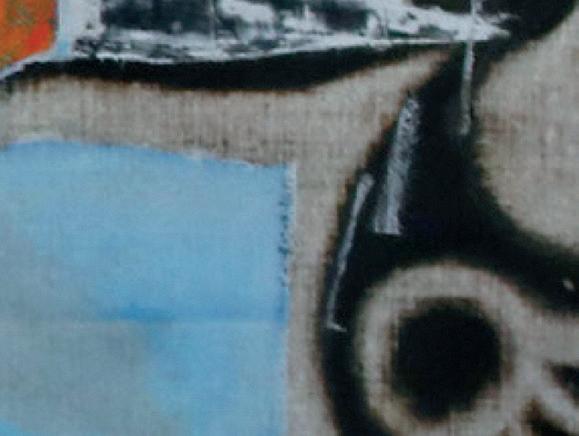


The inner world of Arthur Lanyon’s paintings combines intuitive motifs with an emotive, gestural, abstracted language.
When he decides to start another painting, Arthur Lanyon crosses the threshold between two aspects of his life. He leaves the home that he shares with his young family and enters his studio. Those two aspects are not compartmentalised. The interplay between real and invented, personal and public, the observed and accidental is apparent in his compositions.
When applied to art, abstraction implies a foothold in the world we experience, even if evidence of it is hard to recognise. Lanyon, as a spirited exponent of abstract art, integrates the figurative world with the swirling climate of marks, colours and mute motifs, signs that seem to belong to a reality all their own. His painting fizzes out of the combination.
In Waystation, a small recent painting on panel, a gritty, greyish texture combines oil, acrylic, watercolour and charcoal into a collage of unsettled atmosphere. Irregular black-edged, boxy shapes containing patches of yellow, green, red and black
seem to blow around like autumn leaves caught in an updraft. In their midst is a larger vertical form. Comprising blocky, connected elements, it appears to be leaning gently forward as if to resist the enveloping turbulence. What if that dominant shape is standing in for a figure?
The sighting is not positive because, with this painter, shapes and colours can have multiple readings simultaneously. The title does not help confirm suspicions. And the pretend space of the painting is a playground for diverse impressions and interpretations. So ‘what ifs’ are allowed in the search for significance, even though the search will always be more fantastical than definitive.
So, what if the dark-haired and bearded artist himself has somehow set foot in his own construction? The form even appears to wield a stick that may be seen in some lights as a brush. Art history is full of selfportraits of artists at work in their studios. Rembrandt’s famous version from about 1628 is only one of the most famous. The Dutch master depicted himself standing
OPPOSITE
Detail of ‘Edge of Whiskers’, 2024



Luxury Eco Lodges | Cottages | Holiday Homes | Touring & Camping




Located in the rolling Cornish countryside above the beautiful seaside town of Bude in North Cornwall, Wooda is a family-run holiday park offering a varie ty of luxury self-catering accommodation and touring & camping pitches.
With beautiful sea views, five-star facilities and a range of on-site features including Restaurant & Bar, Coffee Lounge, Cocktail Bar, Takeaway, Nature Trail, Woodland Walks, Farm Animals, Tennis Court, Badminton Court, Gym, Pitch ‘n’ Putt, Secure Dog Field and Playground to name a few, it has something for everyone to create holiday memories that will last a lifetime!








in an empty room, facing the easel. It blocks his path to the door and everyday life outside. Tellingly, rather than depict the act of creation, Rembrandt focuses on the daunting expectations of the surface to be painted.
Arthur Lanyon will know that predicament. For him, as for most artists, the studio is a special place – a laboratory, retreat, prison. Maybe it is the nearest a human can get this side of psychiatry to inhabiting her or his own mind. Inside, neural fibres can almost be heard to snap across a synapse to release the positively charged ions of creativity. The metaphor



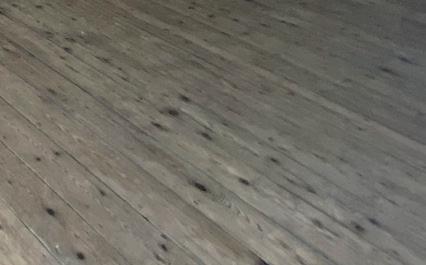


seems especially appropriate to Lanyon: the pacy structures in his paintings seem to trace electric flows and polarisation akin to brain activity.
He describes his studio in the countryside outside Penzance as a polytunnel. With a vaulted translucent roof made with an arching metal frame, it deserves that comparison. Sheets of polythene and plastic admit ample natural light only partially obscured by supplies of wood, plastic and canvas that Lanyon stores overhead. The studio is ground zero. From within its walls, he has captured the attention and imagination of a growing
ABOVE


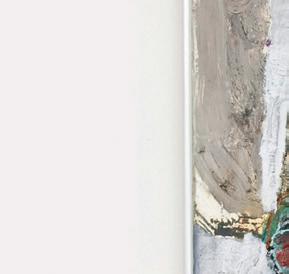






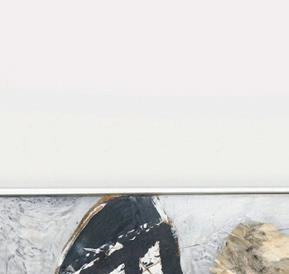
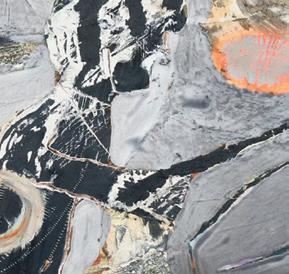








ABOVE
audience with his expressive production. Since 2016, he has exhibited with Anima Mundi gallery in St Ives. A photo feature in the weekend edition of the Guardian national newspaper accompanied his last solo exhibition there, two summers ago. Although his work is most often seen in his native West Cornwall, opportunities have also occurred in recent years in London, continental Europe and Mexico.
Lanyon’s practice is physical. In summer, the studio is hot and draughts are scarce; and its location means that winter’s northwesterlies whistle across his workspace. But, as he points out, at least he can stand to his full height indoors. A previous studio was so low that he knelt for much of the time on wood pallets. His knees complained vehemently. Then luck, of a sort, intervened and he moved his archive of existing paintings, his equipment and his growing family into new surroundings. Or not exactly new but the house he had grown up in. Built by his parents, it was now vacant.
“Painting,” Lanyon said a few years ago to Joe Clarke, the owner of Anima Mundi, “is like having two reciprocal minds. You direct but also take direction back and forth.” Painting emerges from his commitment to materials. Talking about individual pieces he has made, he navigates the tussle of lines and flashes of colour with references to the paints he uses and how
they come to appear at that point in the work. He speaks animatedly about a deep black paint he has discovered. A copper chromite spinel mixed into linseed oil, it gives him the viscous matte finish like slate that enriches a distinctive feature of his pictures for several years.
The diversity of Lanyon’s marks offers one path into interpreting his work. It is not unknown for the artist to invite visitors to add their marks as well; his children certainly contribute from time to time. Linear shapes are the building blocks of his visual language, weaving over and through images “like trails of a hungry snail”, he says. That vivid indication of Lanyon’s eclectic inspirations may offer a way into one large painting on linen, called Snail’s Pace. The surface is traversed by pathways unsure of their destination. Neutral tones of white, grey and black prevail. Loaded with streams, strings and sequences, the image all but banishes colour into ethereal traces of the primary hues Lanyon enjoys.
“Decisions have to be dealt with materially,” he says. ‘I mix lots of media and pressures of application so it helps to understand the properties of the substances I use. Otherwise, things will crack and fall off.” For instance, pigments have different drying times and mixing media into one image calls for a fabric support strong enough to take constant, vigorous working. Lanyon choses a hard-wearing, coarse
linen for his biggest compositions. They often combine oil paint, acrylic and primer, spray paint, xylene marker pens, solvents as well as charcoal dust. He collages cloth and paper and regularly applies an all-over thin red wash with a cloth. That leaves a subtle red stain in bright colours, preventing them from becoming too “pretty”.
He also rigorously edits and alters. After hauling a large expanse of unstretched canvas into his garden, he erases passages of work with an orbit sander. Or he will sand out areas of paint to aid the overall balance of light and dark, colour and space in the emerging composition. Time is also set aside for turning the pages of books, sifting through drawings or reflecting on the previous day’s progress. He is alert to the dynamic advances of modern painting. Graduating in 2008 with

a first from art school in Cardiff, he had studied the radical theories of twentiethcentury art, especially Cubism. The visual style pioneered by Picasso and Georges Braque, it proposed a new reality that depicted radically fragmented objects. But he also looks for ideas from the deeper past. Sources can be surprising: his latest, crowded canvases recall the technical artistry of Japanese woodblock prints from the nineteenth-century, distinguished by the intricate structure of colour gradients.
Lanyon was born in Leicester. But his heritage is in west Cornwall – and deeply rooted in art history. His grandfather was Peter Lanyon, justifiably acclaimed as one of the most important painters in postwar Britain. A leading figure in what has come to be known as the St Ives School (although the artists associated with it recognised no such coherent group), he adapted the expressionist trend in abstract art towards forms and gestures inspired by the landscape and climate of West Cornwall which he knew intimately from walking, cycling, swimming, caving and, ultimately, gliding.
Arthur Lanyon’s father Matthew, however, held back from pursuing art, studying geology at Leicester university and practising joinery. Within two years of his arrival in 1985, Arthur and his parents were living in Cornwall. Moreover, Matthew was now painting, assimilating his own father’s influence into his own





ABOVE

semi-abstract paintings indebted to his home environment. Every day began with drawing and painting with his son, in the days before Arthur went to school. Memory and past experiences are important sources for this latest Lanyon to join the art scene. His childhood drawings are also a starting point. He likes to connect with the intuitive graphic skills of very young people because their exciting directness defies adults’ cautious rationality.
Indeed, for one large painting called A Moon with a View, Lanyon borrows a tree from a drawing by his small son, Rory. Elaborated into a multicoloured canopy of chopped together reds and greens, it appears at the top edge of the canvas. Unable to fit an owl hole into the slender trunk he had drawn, Rory sketched a circle on the vacant paper beside it, setting the hole loose to float on the page. The curious logic of that solution fired Lanyon into a composition of his own. A chain reaction followed that gave expression to his natural good humour, an asset as strong as the formal nimbleness of his drawing.
Giving insight into his own approach, Lanyon quotes the influential contemporary American painter, George Condo, who once described the brushstroke of fellow American Jackson Pollock as “like a caveman scratching at the wall of his own mind.” The line stands out as relevant to Lanyon because his paintings burrow into his consciousness and that of his audience.
Somehow, the situations he paints strikes a chord with each onlooker’s own experience. Like his grandfather and father, Lanyon paints sensations. Unlike them, his attention is concentrated on the process of painting instead of on the land. Through action he makes contact with the inner energy of intellectual and emotional life. Sometimes colour expresses those feelings directly. Asked to describe the purpose he attaches to the colour orange, he candidly replies, “psychedelics, an optical buzz. It’s used sparingly; it can take a week for an image to settle and rock.”
The nearest comparison to the febrile agitation of a painting like the recent Quartz Crash is the helter-skelter, discontinuity of the trip back to waking from anaesthesia. A panoply of effects is put on display. Drawing swings cinematically from colour to monochrome like flashbacks in film. Indecipherable shapes hurtle this way and that across the surface of the canvas, intercut with the rapidity of marks that revs like a motorcycle engine. Time is bent and space is shallow. Like Rembrandt’s easel in his studio, this canvas blocks the door and, with it, access to the exits.
Arthur Lanyon’s exhibition, A Moon with a View, is on view at Anima Mundi, Streetan-Pol, St Ives, from 19th July to 31st August 2024. All images © Arthur Lanyon and courtesy the artist and Anima Mundi.
animamundigallery.com
WORDS BY MARK HILLSON
As a company that prioritises the wellbeing of our employees and our impact on the planet, sponsoring an organisation that supports young people with life skills, improves mental health and focusses on marine conservation, perfectly aligns with our company values.
I visited The Dive Project in Porthkerris to find out more and was extremely impressed by the focus placed on the holistic development of young people through the many outdoor activities including learning to scuba dive. By investing in programmes that promote mental wellness and personal growth, it not only benefits the individuals involved but also contributes to creating a healthier and more resilient community.
Preserving the earth’s natural resources is vitally important to us as a company and it’s clear to see how a project which puts emphasis on being in and supporting nature and natural habitats aligns with our values. Not only is it teaching young people about healthier lifestyles but it’s also teaching about topics that are critical to the future of the planet. This directly aligns with our own focus on sustainability education, with our overarching mission to live in a world where there is no more waste.

Having lived in Cornwall all my life, I have had the benefit of being surrounded by our beautiful countryside and visited many of our wonderful beaches, and that’s led to a personal passion for the outdoors and protecting our environment. I find being in nature is one of the best things you can do to support your own wellbeing and The Dive Project really capitalises on that, creating an environment where young people can thrive while really connecting with their surroundings.
We have developed a range of educational resources available for teachers to use and currently run, on behalf of Cornwall Council, two visitor centres in Cornwall based in St Dennis and Bodmin where schools can visit for free and learn more about the importance of the waste hierarchy and what they can do to help protect out planet. I’m delighted to be involved in the sponsorship of such a fantastic project and look forward to visiting again soon.
Mark Hillson is General Manager of SUEZ, Cornwall. Working in partnership with Cornwall Council and local nongovernmental organisations SUEZ brings an innovative solution to the management of Cornwall’s waste and recycling.
suezcornwall.co.uk
diveprojectcornwall.co.uk
Mark Hillson

























Bespoke furniture and luxury interiors handmade in Cornwall – from unique, one-off designs to entire room transformations to tailored joinery packages.
Harnessing 35 years of experience, Rozen’s highly skilled team of crafters are dedicated to the finest standards. Making everything from freestanding kitchen units to bespoke dining tables to beautiful bedroom furniture and more, our craftsmen pour precision, care and artistry into every job. B E S P O K E









